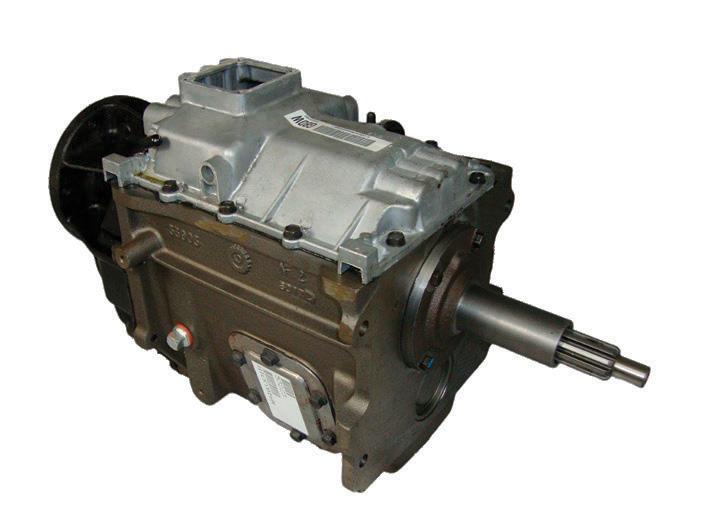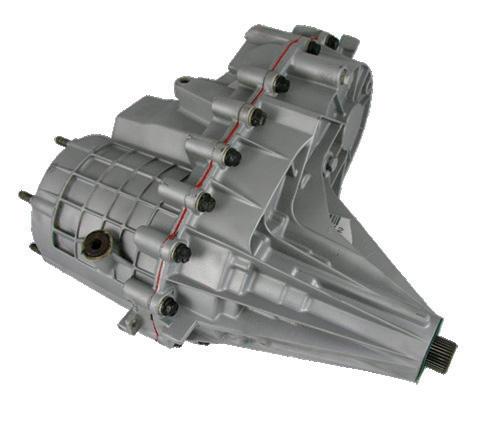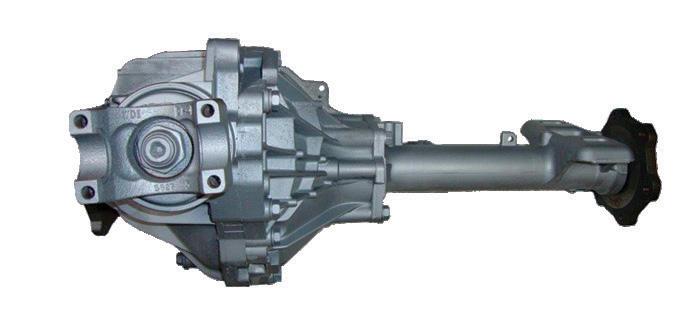










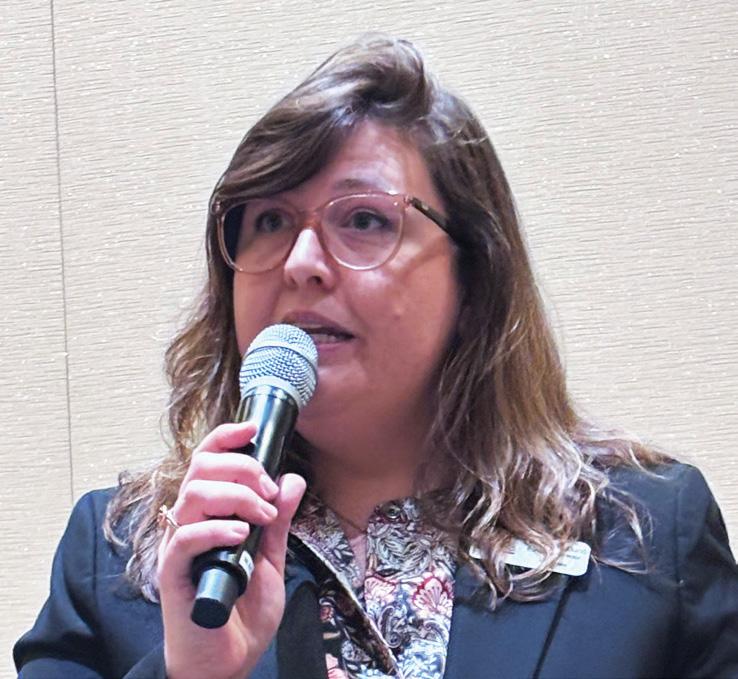
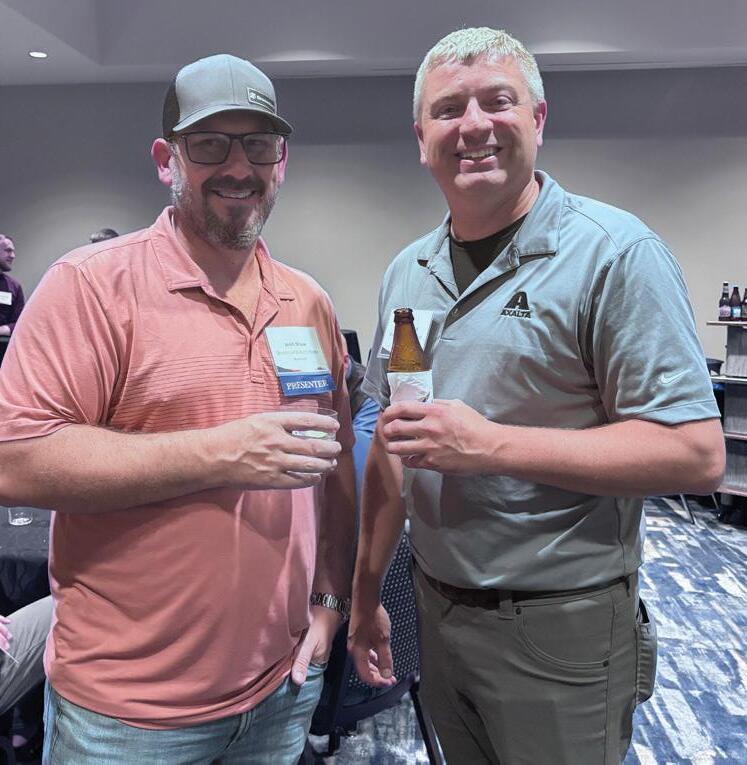
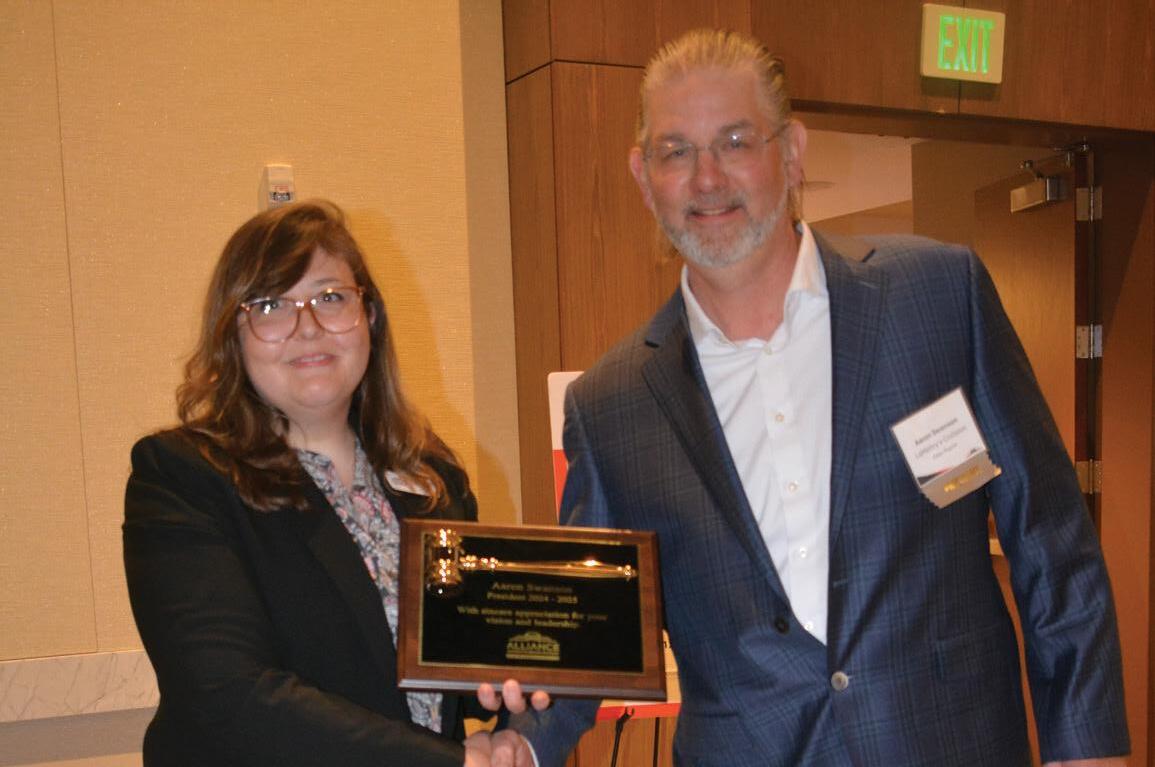



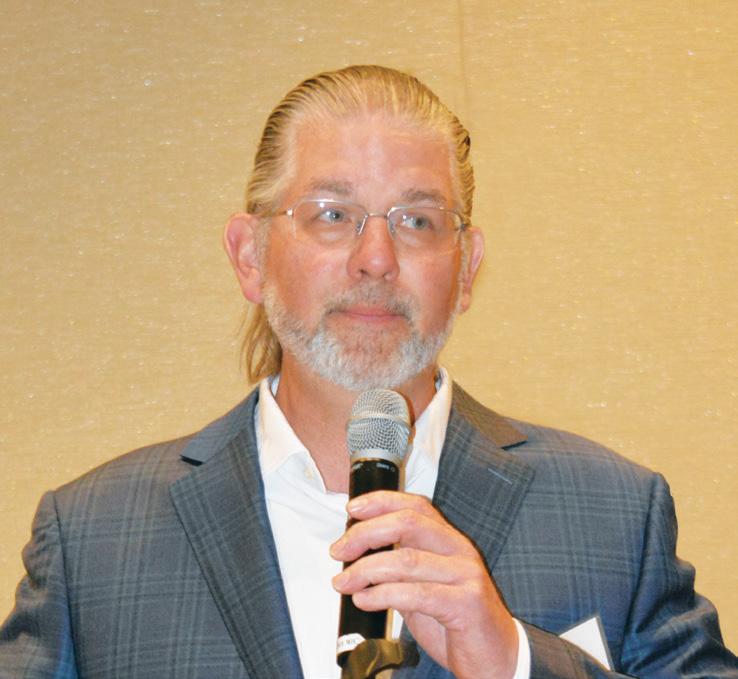
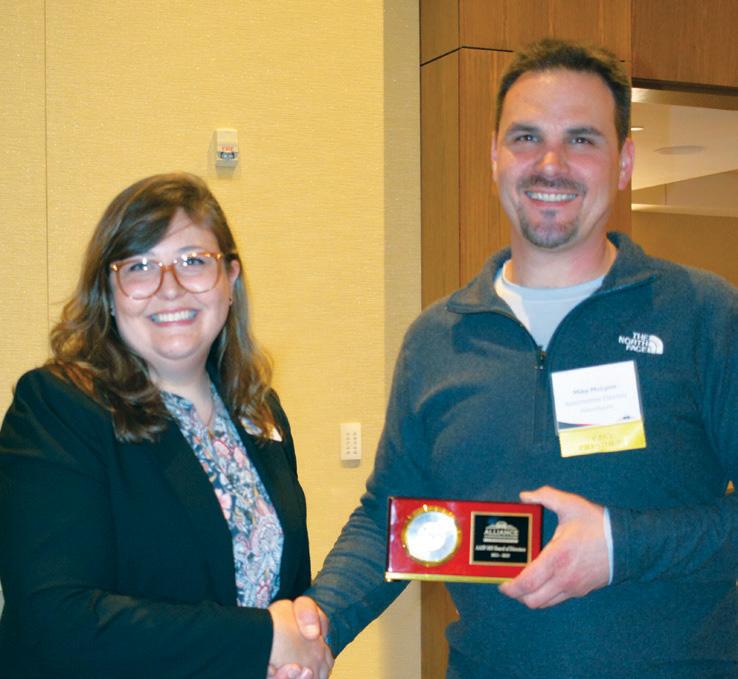
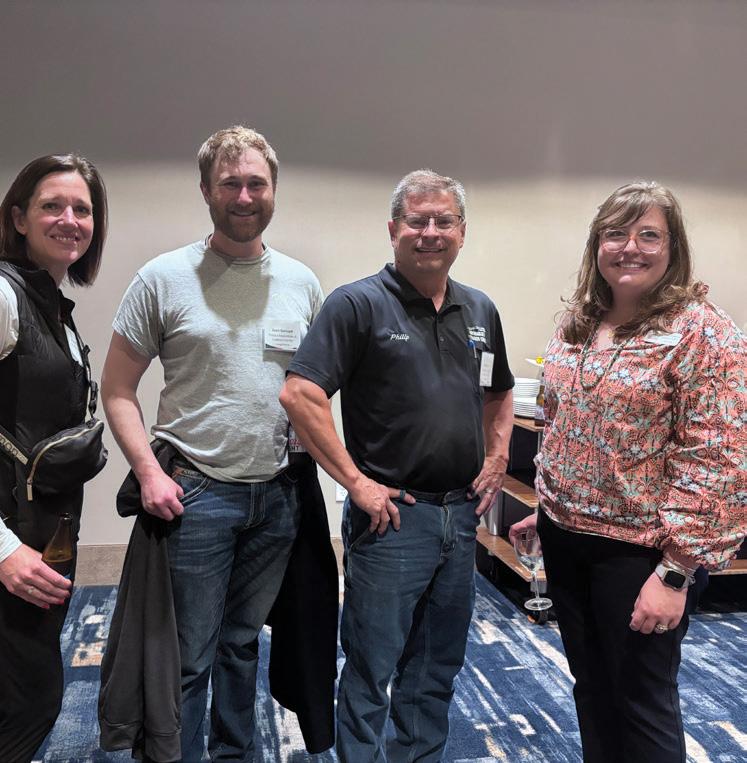

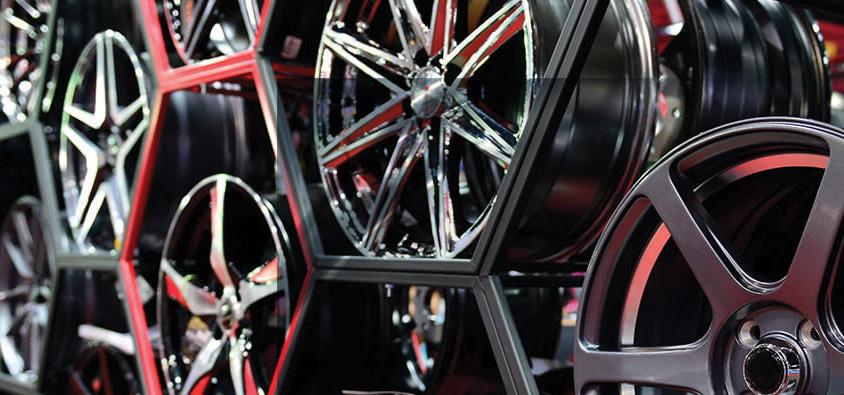
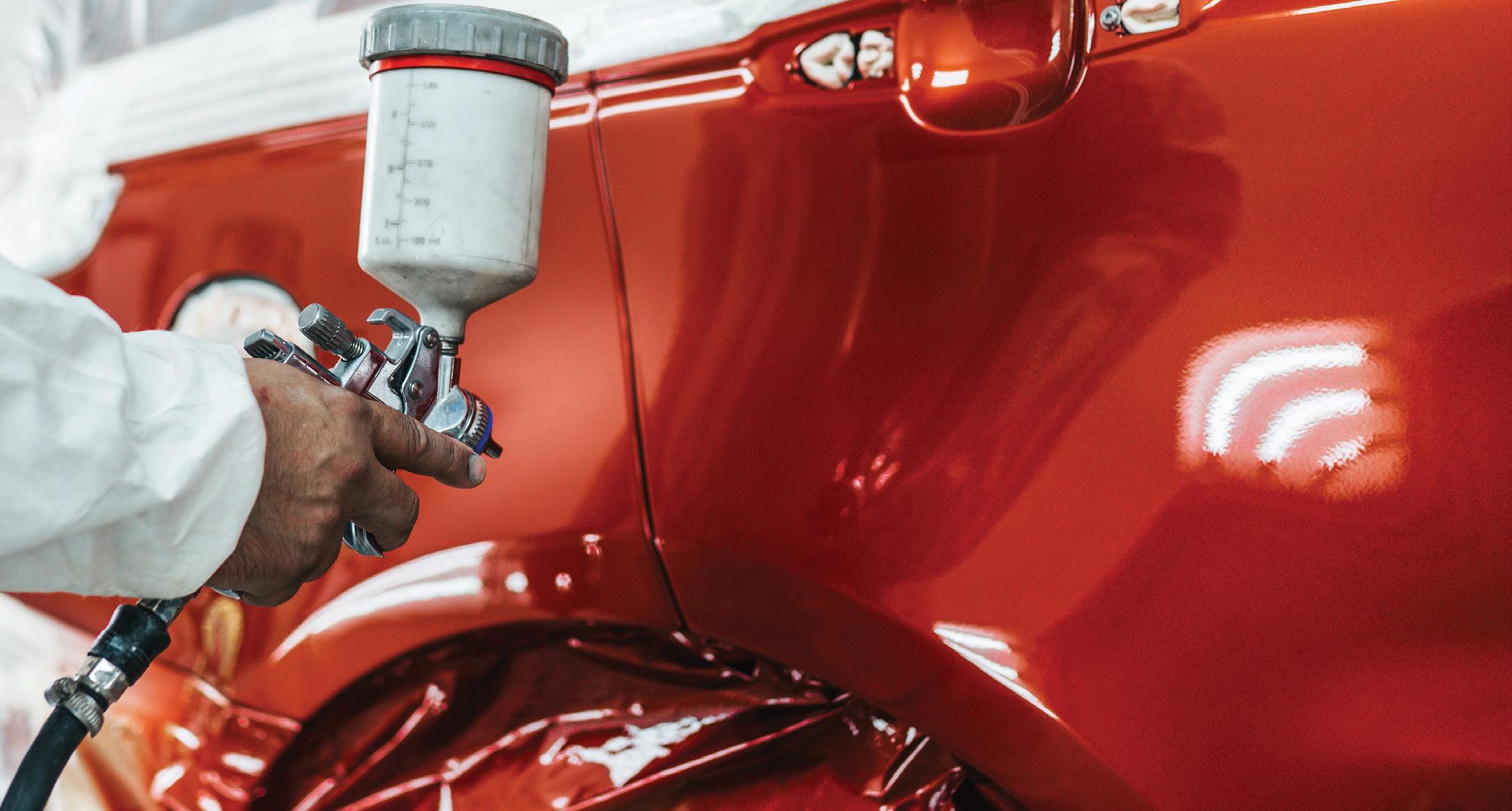


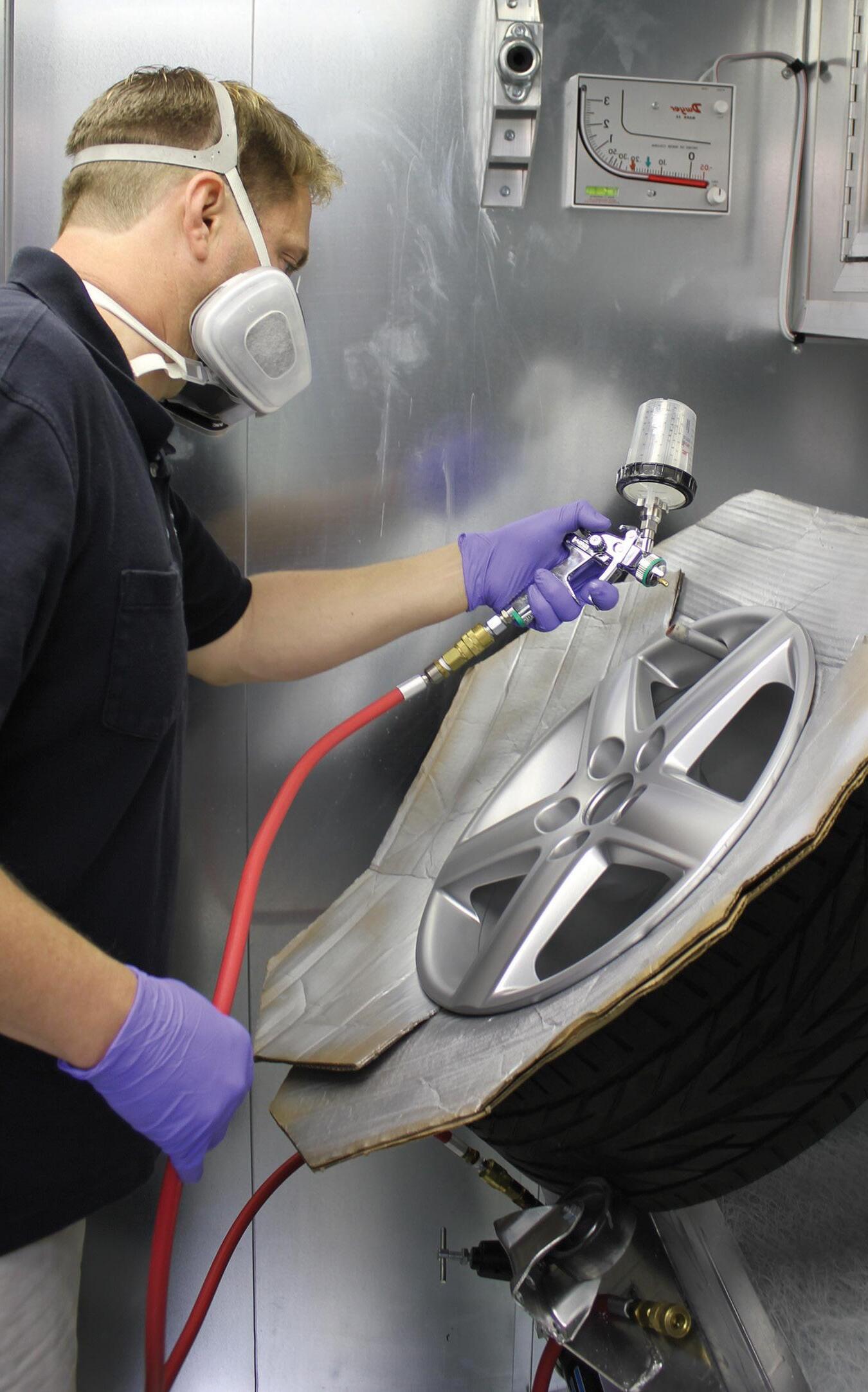
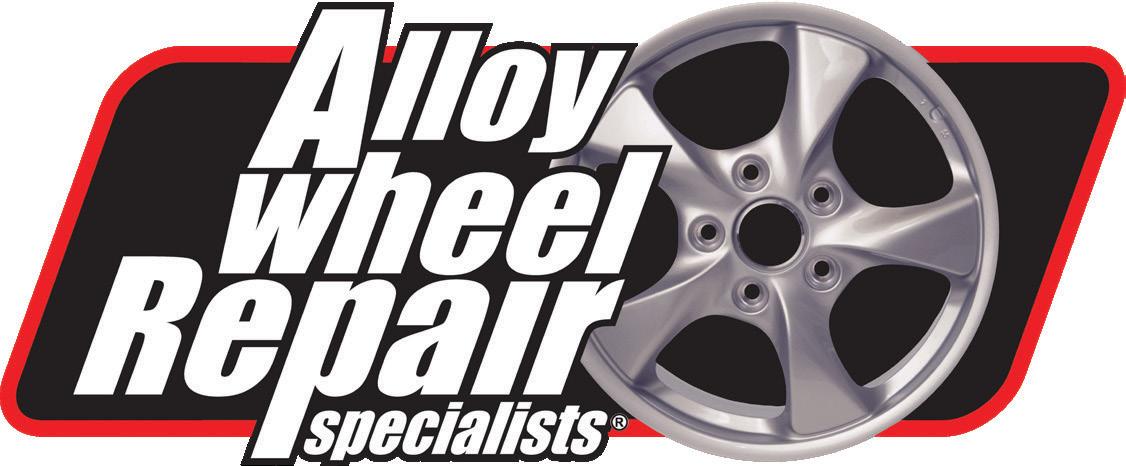


BOARD MEMBERS 2025 - 2026
PRESIDENT
Randy Notto
IMMEDIATE PAST PRESIDENT
Aaron Swanson
SECRETARY-TREASURER
Brandon Wistrom
COLLISION DIVISION DIRECTOR
Shannon Christian
MECHANICAL DIVISION DIRECTOR
Ashlan Kaplan
ASSOCIATE DIVISION DIRECTOR
Andrea Ossowski
COLLISION SEAT
Scott Miller
MECHANICAL SEATS
Dan Gleason
Greg Kasel
EXECUTIVE DIRECTOR
Linden Wicklund
OFFICE MANAGER
Jodi Pillsbury
1970 Oakcrest Ave., Suite 102
Roseville, MN 55113
PHONE: 612-623-1110
FAX: 612-623-1122
aasp@aaspmn.org | aaspmn.org
AASP of Minnesota is an association of independently-owned automotive service businesses and industry suppliers dedicated to improving the state’s automotive service industry and the success of its members.
PUBLISHED BY:
Thomas Greco Publishing, Inc. 244 Chestnut St., Suite 202 Nutley, NJ 07110
PHONE: 973-667-6922
FAX: 973-235-1963 grecopublishing.com
PUBLISHER
Thomas Greco thomas@grecopublishing.com
SALES DIRECTOR
Alicia Figurelli alicia@grecopublishing.com
EDITORIAL DIRECTOR
Alana Quartuccio alana@grecopublishing.com
SENIOR CONTRIBUTING EDITOR
Chasidy Rae Sisk chasidy@grecopublishing.com
OFFICE MANAGER
Donna Greco donna@grecopublishing.com
PRODUCTION COORDINATOR
Joe Greco joe@grecopublishing.com
4 Focusing on Growth and Community in Southern Minnesota
Building a mechanical-focused small group for southern Minnesota.
5 2025 Legislative Session Goes Out with a Whimper
Following the conclusion of a chaotic session, AASPMN gears up for a hearing on its legislation in 2026.
6 AASPMN Awards Scholarships
$19,000 was awarded to 23 automotive students in Minnesota.
8 30th Annual AASPMN Golf Outing Registration
Wednesday, June 18
Majestic Oaks Golf Club Ham Lake, MN
10 New Tariffs Will Depress 2025 Auto Sales but Boost the Aftermarket
Tariffs on vehicle imports and assembly parts could affect the U.S. in a substantial way.
18 Help! The Car’s on Fire! Exploring the inherent fire dangers with electric and gasoline vehicles.
20 D.E.G.
Latest inquiries on Solera Qapter (Audatex), Mitchell and CCC.
Learn about AASPMN member benefits, services and programs.

Highlights from this year’s Conference from education to Board recognition, a vendor showcase and more!






by Ashlan Kaplan, AASPMN Mechanical Division Director

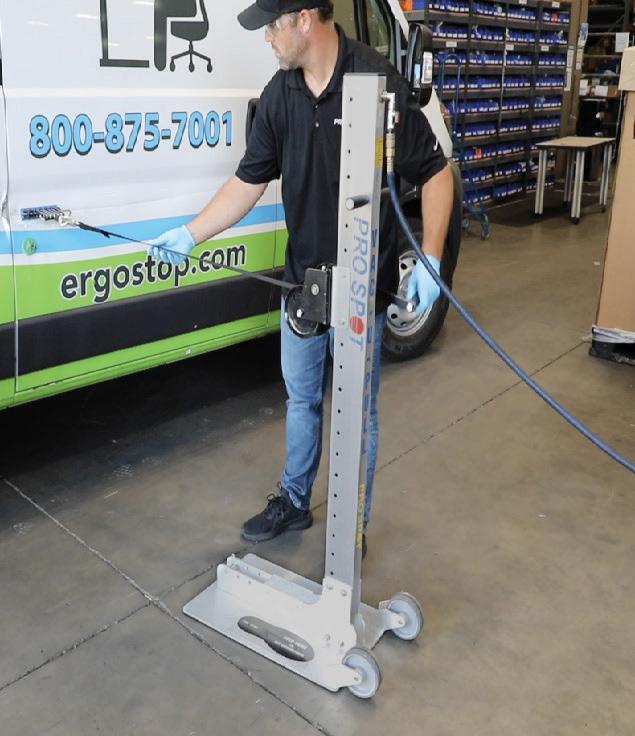
My name is Ashlan Kaplan, and I’m the owner of Cannon Auto Repair in Cannon Falls, MN. I’m proud to be following in my father’s footsteps. He built a strong reputation in the community for honesty, integrity and quality workmanship. From a young age, I watched him pour his heart into this business, and once I started working by his side, I learned firsthand what it means to serve both customers and the industry with pride. Taking over the shop after he passed and continuing his legacy has been an incredible journey, and now, I’m honored to bring that same passion and dedication to my new role as Mechanical Division Director for AASPMN. I’m especially excited to bring a voice for southern Minnesota to the table, representing the needs and interests of mechanical shops like ours. As a shop owner myself, I understand both the daily challenges and the incredible opportunities we face as shop owners, technicians, service advisors and professionals.
When I started my career here working side by side with my dad, I learned he believed in the power of collaboration. When shops work together, share

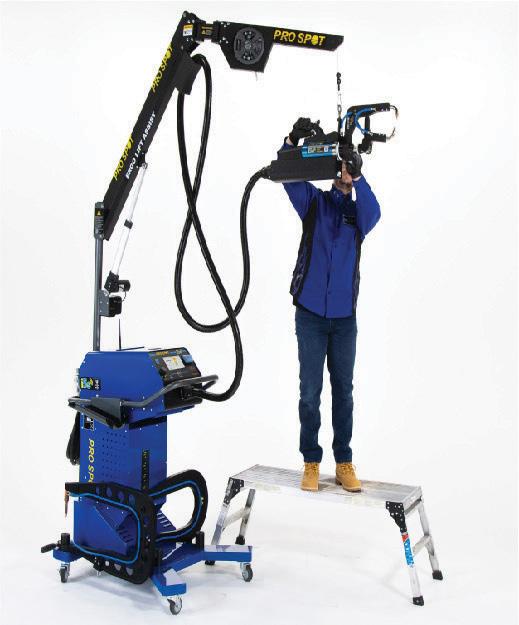
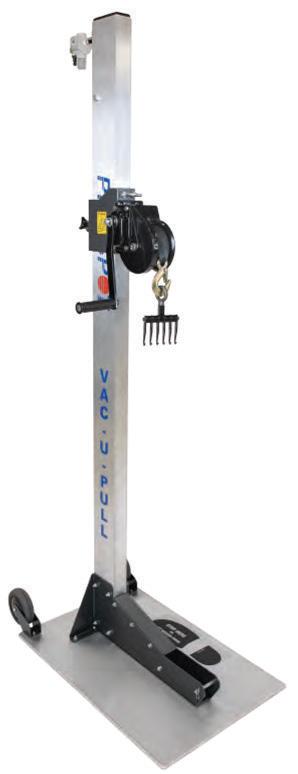
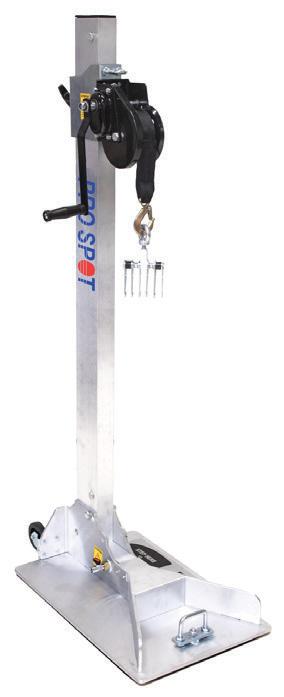
resources and learn from one another, the entire industry benefits. I would not be where I am right now if it was not for the guidance and advice from other shop owners. That’s one of the main reasons I’m enthusiastic about serving on the AASPMN Board of Directors. I want to help grow the mechanical side of our association and strengthen our community in meaningful, tangible ways. During my term, I would like to focus on mechanical growth within AASPMN. The mechanical segment is a vital part of our organization, and I see great potential in expanding support, resources and engagement for

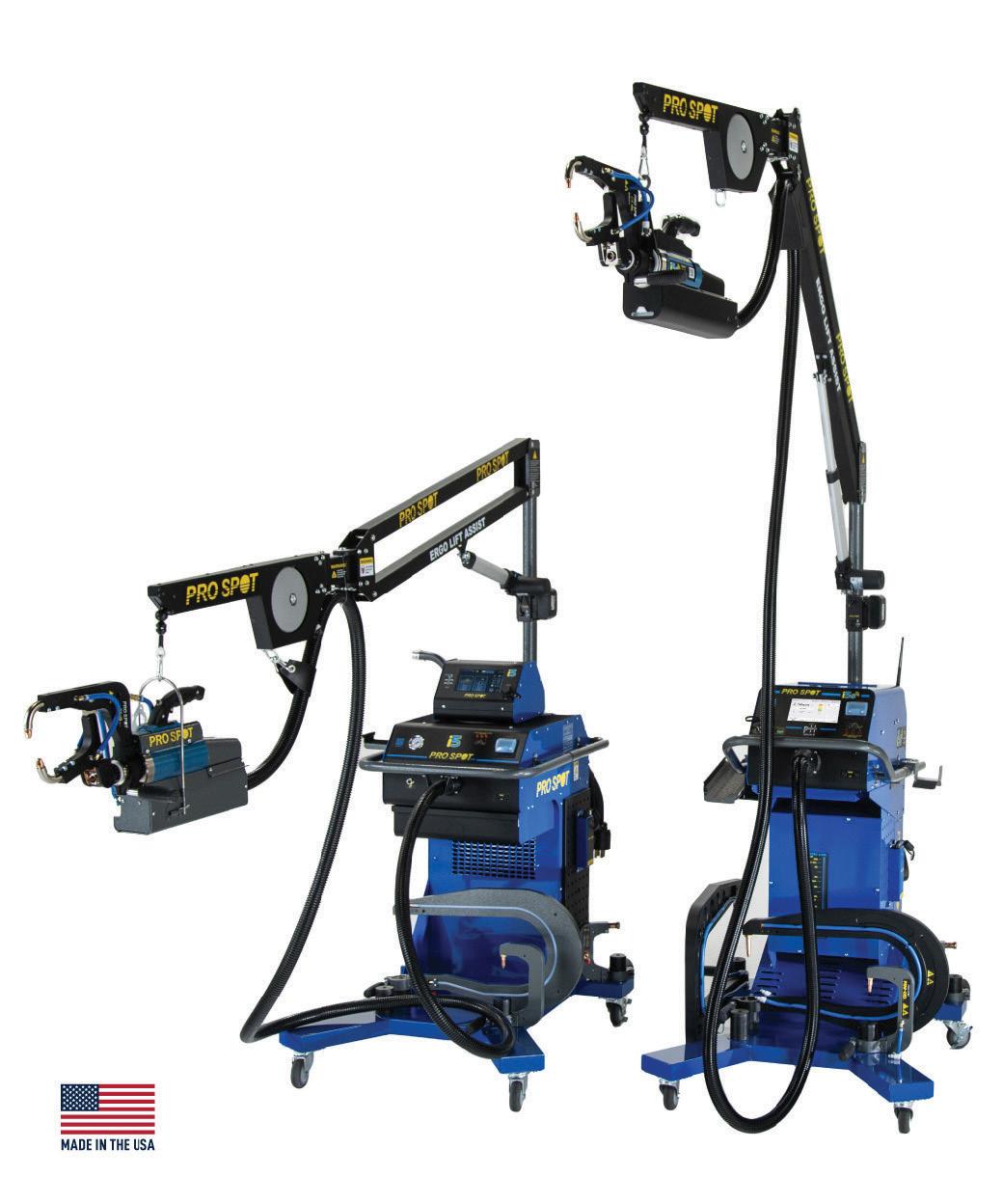

One of the most chaotic and politically fraught legislative sessions in recent memory ended on May 19 with the lion’s share of the budget yet to be enacted. Lawmakers adjourned the 2025 legislative session after passing only a handful of omnibus budget bills, leaving roughly 90 percent of the state budget to be dealt with during an upcoming special session. Legislative leaders in the House and Senate have tasked budget chairs to continue negotiations on their omnibus budget bills in the hopes that a one-day special session can be called by Governor Walz to assemble the rest of the next twoyear budget. Now that lawmakers have blown through the Constitutionally mandated adjournment date, the next hard deadline is June 30 as major functions of state government would begin to shut down on July 1 without a new budget in place.
Lawmakers have left themselves with a great deal of unfinished business to address in special session. While some of the conference committees appeared somewhat close to agreement at the end of session, others have not met even a single time. The budget areas still needing attention are:
• Environment
• K-12 Education
• Commerce
• Energy
• Health
• Human Services
• Jobs and Workforce
• Higher Education
• Transportation
• Taxes
Within these budget areas, a number of policy issues have bubbled up as sticking points to an overall agreement. These include an effort to end public health insurance coverage for adult immigrants without legal status, a fight over state funds for private K-12 schools, disagreements over who should pick new members of the University of Minnesota’s governing board, potential adjustments to recently enacted programs that let workers accrue earned sick time and paid long-term leave for family care and a discrepancy over the size of a capital investment package.
The drawn out budget negotiations and lack of overall progress did gobble up the time AASPMN had been hoping to use for an informational hearing on S.F. 2209 in the Senate Commerce Committee. Our priority policy bill for the biennium does not deal with the budget and so is more appropriate to be acted on during the second year of the biennium, but we had been told we’d receive an opportunity for an informational hearing on it this year in order to frame the discussion for next session. While the messy end to

by Sam Richie, AASPMN Lobbyist
the session did not allow for that to take place, we have been told to gear up for a hearing on the legislation in 2026.
With no legislative election this fall, we know the lawmakers who will be back in St. Paul in 2026 and we intend to reach out to key players on the Commerce Committee for summer and fall shop tours and meetings. Please keep an eye out for outreach from Sam Richie and Linden Wicklund to participate.
As we turn the page on another odd session, I want to extend my sincerest thanks to AASPMN members who have been active in our efforts this year. Between our Day at the Capitol event and direct member engagement with lawmakers, our presence and impact at the Capitol has been steadily growing. Thank you to all who have chipped in to make that possible.

WIN offers education, mentoring and leadership development opportunities to build critical skills for success in the collision repair market.
• Local/Regional Networking Events
• Annual Education Conference
• Educational Webinars
• Mentoring Opportunities
womensindustrynetwork.com
• Scholarship Program
• School Outreach Program
• Most Influential Women (MIW) Award
AASPMN is pleased to announce it has awarded 23 scholarships totaling $19,000 to help automotive service and collision repair students pay for tuition or tools during the 2025-26 school year. The scholarships are $500 or $1,000 each and are made possible by the generous donation from the Minnesota State I-CAR Committee, as well as proceeds from AASPMN’s Annual Race for Automotive Education fundraiser.
Thirty-four college and high school students from 15 schools submitted completed applications. Applications were reviewed by a committee of industry representatives, with consideration given to scholastic achievement, education and career goals, financial need and written recommendations.
The recipients are:
• Matthew Burg, Dakota County Technical College, Rosemount – Collision Repair Technology
• Brandon Cook, Minnesota North College, Hibbing –Automotive Service Technology
• Quentin Dukowitz, Dunwoody College of Technology, Minneapolis – Collision Repair Technology
• Haidyn Emerson, Minnesota State Comm. & Technical College, Moorhead – Automotive Service Technology
• Elijah Eskola, Riverland Community College, Austin –Automotive Service Technology
• Jaeden Felcyn, Minnesota North College, Hibbing –Automotive Service Technology
• Matthew Friesen, Dakota County Technical College, Rosemount – Automotive Service Technology
• DaShawn Hartle, Lake Superior College, Duluth –Automotive Service Technology
• Zoe Hauswirth, Lake Superior College, Duluth –Automotive Service Technology
• Daniela Kaufman, Dunwoody College of Technology, Minneapolis – Automotive Service Technology
• Noah Maki, Lake Superior College, Duluth –Automotive Service Technology
• Elliot McDill, Lake Superior College, Duluth –Automotive Service Technology
• Myles McKnight, Hennepin Technical College, Eden Prairie – Collision Repair Technology
• Nicholas Ostrowski, Lake Superior College, Duluth –Automotive Service Technology
• Oo Reh, Riverland Community College, Austin –
Automotive Service Technology
• Edward Sandquist, Alexandria Community & Technical College, Alexandria – Diesel/Heavy Duty Mechanics
• Eh Soe, Century College, White Bear Lake –Automotive Service Technology
• Yezibel Stepp, Dakota County Technical College, Rosemount – Collision Repair Technology
• JoAnna Swartwood, Lake Superior College, Duluth –Automotive Service Technology
• Ava Valley, Hennepin Technical College, Brooklyn Park – Collision Repair Technology
• Jaime Vasquez, Dunwoody College of Technology, Minneapolis – Automotive Service Technology
• Abbie Vera, Dunwoody College of Technology, Minneapolis – Collision Repair Technology
• Joash Youso, Dakota County Technical College, Rosemount – Automotive Service Technology
Congratulations to all this year’s recipients!
The scholarship awards are the centerpiece of AASPMN’s Automotive Education Fund, which was established to provide financial resources to support automotive students, enhance automotive programs and raise awareness of career opportunities in the independent automotive service industry.
The AASPMN website was designed to help you seek out other AASPMN members when looking for services, tools/equipment or general advice and has search capabilities to facilitate those connections. However, in order for the search results to include information about your shop, you must complete your member profile on the website.
To do that, go to aaspmn.org and click on the “Members Only” button in the upper right corner. You will be prompted for a username and password. (If you don’t know this information, contact the AASPMN office.) Once you are logged into the site, click on “Members Only” on the navigation bar. A drop-down menu will appear. The first option on that menu is “My Profile.” Click on the “My Profile” option to update your company profile. Once you’ve completed your profile, hit the save button at the top of the page.
Please take the time to check out all of the great information and resources on the AASPMN website, including:
Northern MN Collision Shop Meeting
1st Tuesday Each Month, 6 - 8pm TBA Northern MN
Southern Metro Collision Shop Meeting
1st Wednesday Each Month, 8 – 9:30am MN ADAS, Bloomington
Central MN Area Collision Shop Meeting
2nd Wednesday Each Month, 7:30 – 9:30am
APH Headquarters, St. Cloud
Mechanical Zoom Meetup
3rd Tuesday Each Month 9 - 10am
Collision Zoom Meetup
3rd Thursday Each Month, 9 - 10am
30th Annual AASPMN Golf Outing
June 18
Majestic Oaks Golf Club, Ham Lake
A Night Out with the St. Paul Saints August 21
CHS Field, St. Paul
Information about:
• Association news
• Member benefit programs
• Current and past legislative activities and find your legislators
• Industry training and upcoming events
Member shops, tools and equipment:
Search our database to find a member shop in your area, see what diagnostic or other equipment they own, what repair information they subscribe to, which management system they use and more! Our extensive database was designed to help members connect with – and be a resource to – other members. So be sure to login and complete your member profile!
Resources/links:
• Regulation of Claims Practices & Prohibition on Insurers Statutes
• Truth in Repairs Act
• Insurer Unfair Claims Practices Report
• MN Motor Vehicle Damage Disclosure & Reporting Requirements
• P-Pages, DEG & other estimating resources
• OEM service information
• MPCA Fact Sheets and other
regulatory compliance information
Sample documents:
• Complaint Letter to Department of Commerce
• Loaner Car Agreement
• Repair Authorization form
• Notice of Hazardous Defects
• Assignment of Insurance Proceeds
• Sheriff’s sale instructions and documents
Consumer info:
• Find a Shop
• Consumers’ “Know Your Rights” (after submitting an automobile accident claim to your insurance company)
• Motor Vehicle Service Contracts: FTC, MN Attorney General and Consumer Reports
• FTC Consumer Alerts on auto warranties and warranty scams
Other:
• Automotive career and scholarship information
• AASPMN News Magazine –Check out the current or past issues of the association’s monthly magazine
And, much more!
THANK YOU AASPMN 2025 SPONSORS!
LKQ Minnesota Lube-Tech
Optimize Digital Marketing
GOLD
3M
Auto Value/Benco Equipment
BASF
NCS/Single Source
PPG Automotive Finishes
SILVER
Axalta Coating Systems
Colonial Life
Enterprise Mobility
O’Reilly Auto Parts
Sherwin Williams
Suburban GM Parts
Vestis
BRONZE
aaa Auto Parts
Apple Ford White Bear Lake
C.H.E.S.S.
Dentsmart PDR Gallagher
Heartman Insurance
Precision Diagnostics
The Minnesota State Transportation of Excellence 2025 Exemplary Secondary Program of the Year award showcases secondary level transportation programs that serve as exemplary models of institutional support, instructional leadership and program-wide excellence. Under the leadership of Automotive Instructor and Technology Education Building Lead Derek Doescher, the Automotive Career Pathway at White Bear Lake Area High School has seen significant growth and success. Since joining White Bear Lake Area Schools in September 2019, Doescher has expanded student enrollment and fostered partnerships with local industry leaders. His efforts have led to over 1,000 students gaining exposure to the automotive industry and more than 250 students enrolling in Automotive Career Pathway courses each year, marking the highest enrollment to date.
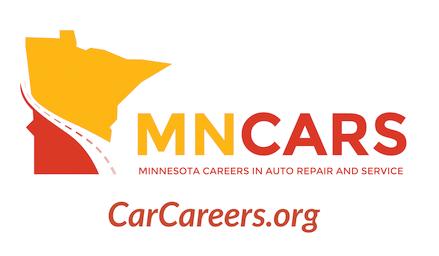
A key highlight of the program is its emphasis on industry credentials – students have completed more than 200 modules annually through the Ford Automotive Career Exploration (ACE) program. This commitment to workforce readiness has made the White Bear Lake Automotive program a regional leader in automotive education and certification achievement.
To learn more about WBLA High School and get involved with the automotive program, please reach out to Katy Olson via email at katy.olson@isd624.org, or by phone (651) 444-6729.
To learn more about TCOE and this award, please visit minntran.org/2025-tcoe-award-recipients.

A MESSAGE FROM AASPMN continued from pg. 4
our mechanical members. Whether it’s through education, advocacy or networking, I believe we can raise the bar for everyone.
One initiative I’m especially passionate about is forming a mechanical-focused small group for southern Minnesota. This would be a space where mechanical shop owners and managers from our region can regularly connect, whether in person or virtually, to share best practices, discuss industry trends and offer support. I’ve seen how powerful these peer groups can be, and I believe they’re one of the best ways to drive improvement, innovation and camaraderie.
If you’re located in southern Minnesota and would be interested in joining this group, I’d love to hear from you. Please feel free to reach out to me directly via email at ashlan@ cannonautorepair.com.
I’m looking forward to meeting more of you, hearing your perspectives and working together to build a stronger mechanical community within AASPMN.
Help us create stronger laws to better protect your customers
Are you unhappy with how your insurance company is handling your claim?
Over 200 people in 74 cities have utilized the information below this year to file a complaint with the MN Department of Commerce. The more customers that complain, the stronger the laws that get passed! Cut out the graphic below, give it to your customers, and urge them to speak up!
● Refusing safety repairs?
● Underpaying your claim?
Are you unhappy with how your insurance company is handling your claim?
● Lack of responsiveness?
● Refusing safety repairs?
● Underpaying your claim?
● Lack of responsiveness?
• Refusing safety repairs?
• Underpaying your claim?
• Lack of responsiveness?
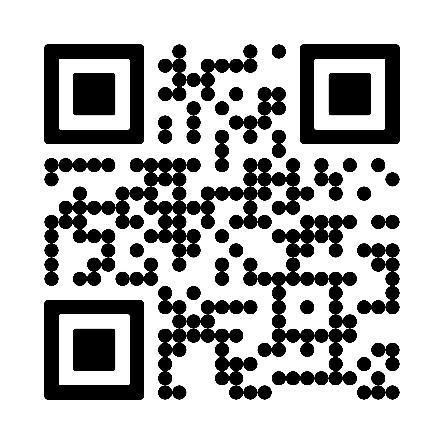
SCAN TO SHARE YOUR EXPERIENCE!
The Minnesota Department of Commerce wants to hear from you! Auto insurance is expensive and the people inside your vehicle are not replaceable.
Scan to share your experience!
651-539-1600 Mn.gov/commerce
The Minnesota Department of Commerce wants to hear from you! Auto insurance is expensive and the people inside your vehicle are not replaceable.
651-539-1600
Mn gov/commerce
651-539-1600
Mn.gov/commerce

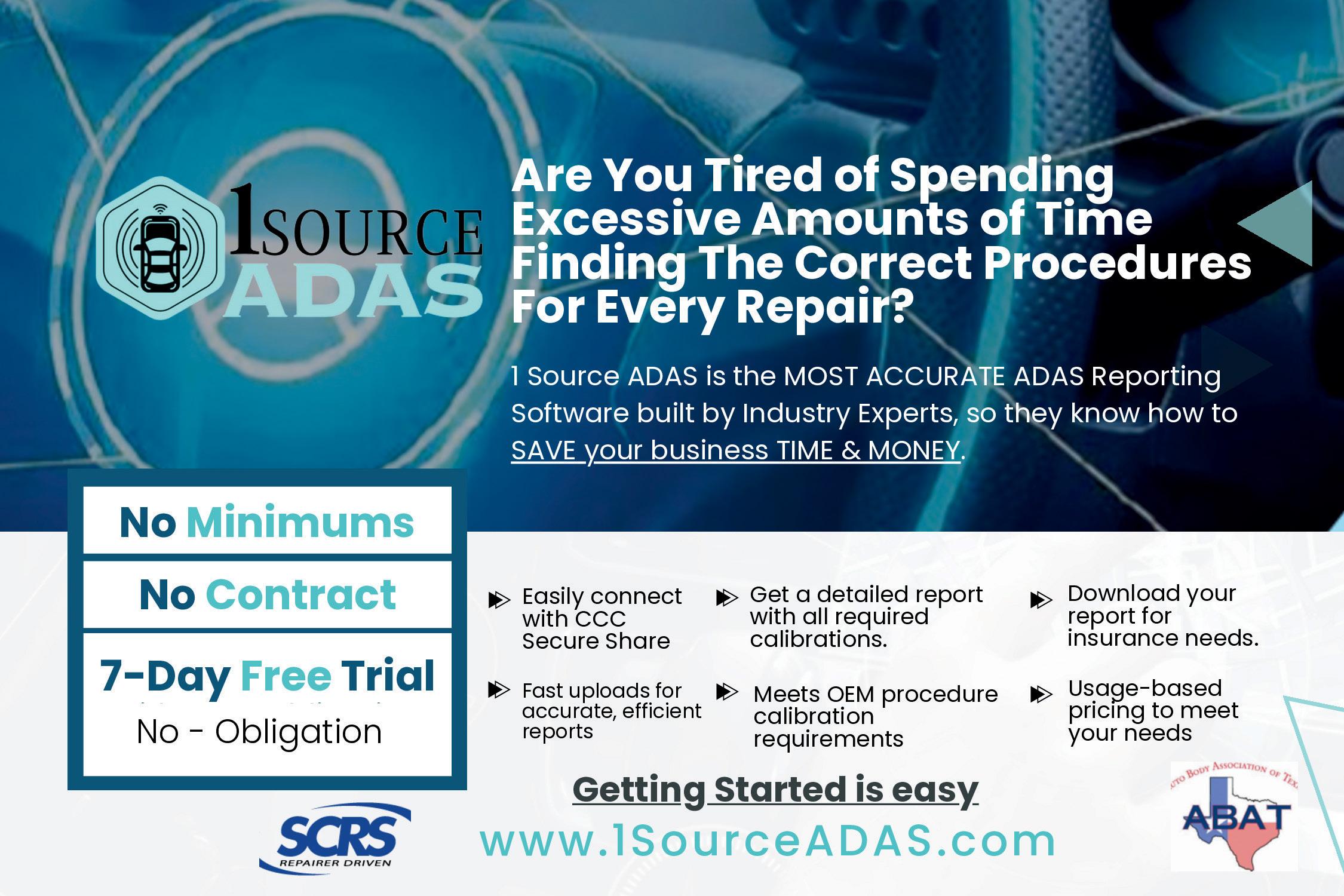
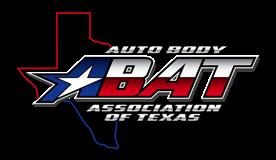

The new car and light truck market has been stuck in low gear since the 2020 onslaught of COVID-19. Annual U.S. light vehicle sales averaged fewer than 15 million from 2020 to 2022, with only moderate gains through 2024. Over these five years, new car and light truck sales totaled over 10 million fewer compared to 2015 through 2019, when volume averaged 17.2 million per year.
A few months ago, analysts predicted that 2025 would be a comeback year, with the new vehicle market topping 16.5 million for the first time since 2019. However, the recently announced tariffs on vehicle imports and many parts used in vehicles assembled in the U.S. have vaporized this optimism. The U.S. new vehicle market could fall to 15.2 million (or lower), failing to match 2016 levels. Under-powered new vehicle sales will impact the aftermarket in at least five ways, providing a strong tailwind for aftermarket sales (which face their own tariff challenges) through 2030, especially internal combustion engine (ICE) vehicle products.
New car and light truck sales were hit hard by COVID19, averaging 14.8 million autos during 2020 and 2021. The new vehicle market declined further in 2022, with fewer than 14 million in sales.
New vehicle sales averaged nearly 15.7 million during the last two years, compared to the 17.2 million annual average sales from 2015 through 2019. Over 10 million fewer vehicles were sold from 2020 through 2024 than during the five years before the onslaught of COVID-19.
the Aftermarket
Tariff-driven higher new vehicle prices (on imports and autos assembled in the U.S. using import parts) will push down the new vehicle market to about a million units (or more) below what many analysts predicted a few months ago. This would lower the 2025 auto volume by about two million units below the average new vehicle market levels from 2015 through 2019.
Lower new vehicle sales will lead to various significant changes that will provide a strong tailwind for the 2025 aftermarket and for years to come. Here are five of the leading changes caused by tariffs that will boost aftermarket volume: higher used vehicle prices, vehicle average age growth, more miles on older vehicles, an upward extension of the age boundary of the repairage sweet-spot and a slowdown in the expansion of the electric vehicle population on U.S. roads.
These changes, prompted by tariffs, will help boost aftermarket product volume through 2030.
Low new vehicle sales (caused by tariff-driven price hikes) will increase the cost of used cars and light trucks. As buyers abandon the expensive new market and shift to more affordable pre-owned options, increased
demand for a limited supply of used vehicles will pump up their value.
With the high-priced used market, consumers will be more likely to repair their older cars and light trucks to keep them in good operating condition. This forecasts aftermarket product sales growth, especially for ICE vehicles, which comprise virtually all vehicles over five years old.
The struggling new vehicle market will elevate the average age of vehicles in operation (VIO). With fewer new cars and light trucks on the road, older vehicles will be kept in operation longer, and their numbers will expand.
The growing average age of vehicles, along with a higher number of older models on the road, will help to increase aftermarket sales because aging cars and light trucks require more maintenance and replacement parts than newer ones.
As consumers keep their vehicles rather than replace them with newer ones, older vehicles accumulate more miles.
Older vehicles use more aftermarket products per mile, and rolling their odometers higher will boost aftermarket product use, especially among ICE cars and light trucks.
Struggling new vehicle sales between 2020 and 2025 will drive down the number of cars and light trucks in the repair-age sweet-spot (age categories six to 10 years old with the highest rates of product replacement) from 2026 through 2030 compared to today’s VIO.
However, this does not mean that fewer repair parts will be sold. Instead, older vehicles will account for a larger number of miles driven, and the upper age boundary of the sweet-spot will be increased by a year or more.
Since older vehicles use more aftermarket products per mile than newer cars and light trucks, this will boost aftermarket product volume.
Lower new vehicle volume will translate into fewer electric vehicles sold. This will slow the EV population growth.
With EVs stuck holding a small share of the nation’s VIO, ICE vehicles will retain their population dominance longer. This will bolster aftermarket volume since ICE cars and light trucks use more aftermarket products than EVs.


At LKQ, the “R” in P.A.R.T. stands for Recycled OEM parts. LKQ first began 25 years ago through the acquisition of several auto salvage yards, and through the years, LKQ has grown to become the largest recycler of vehicles in the industry. LKQ now operates more than 125 auto recycling yards across North America. Through its stateof-the-art processes, LKQ recycles or re-sells more than 90% of the materials from end-of-life vehicles that would otherwise end up in landfills.
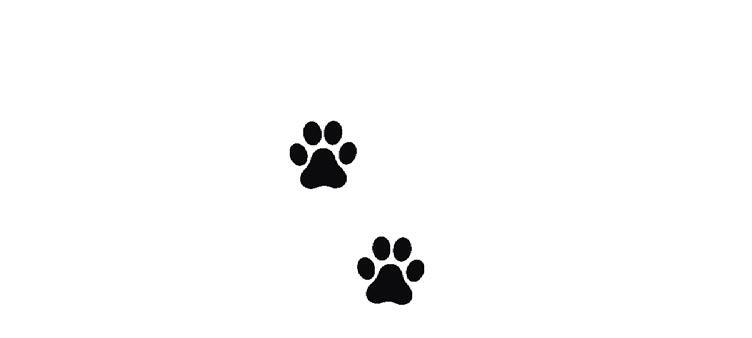

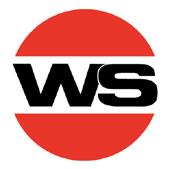
Tools That Keep Their Cool. Even at 95° and 3 jobs behind.
This summer, don’t sweat it—go with the tools manufacturers trust. Whether it’s welding, riveting, dent repair, or EV solutions, our equipment is designed to keep shops e cient, compliant, and equipped for anything. EQUIPMENT & TOOLS WE
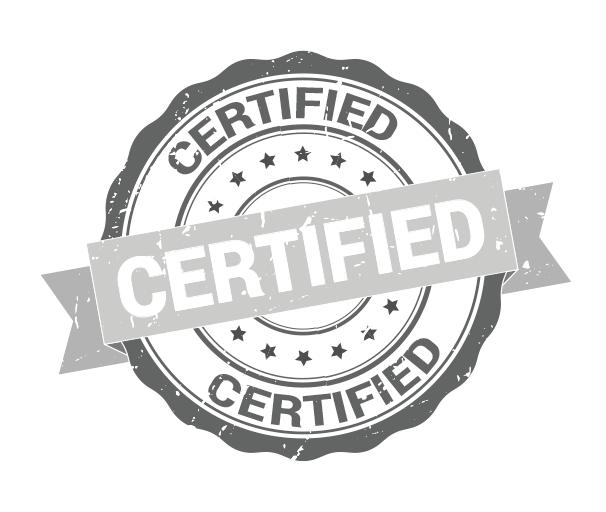
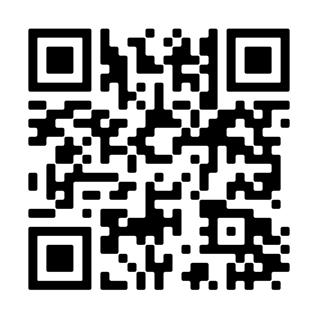
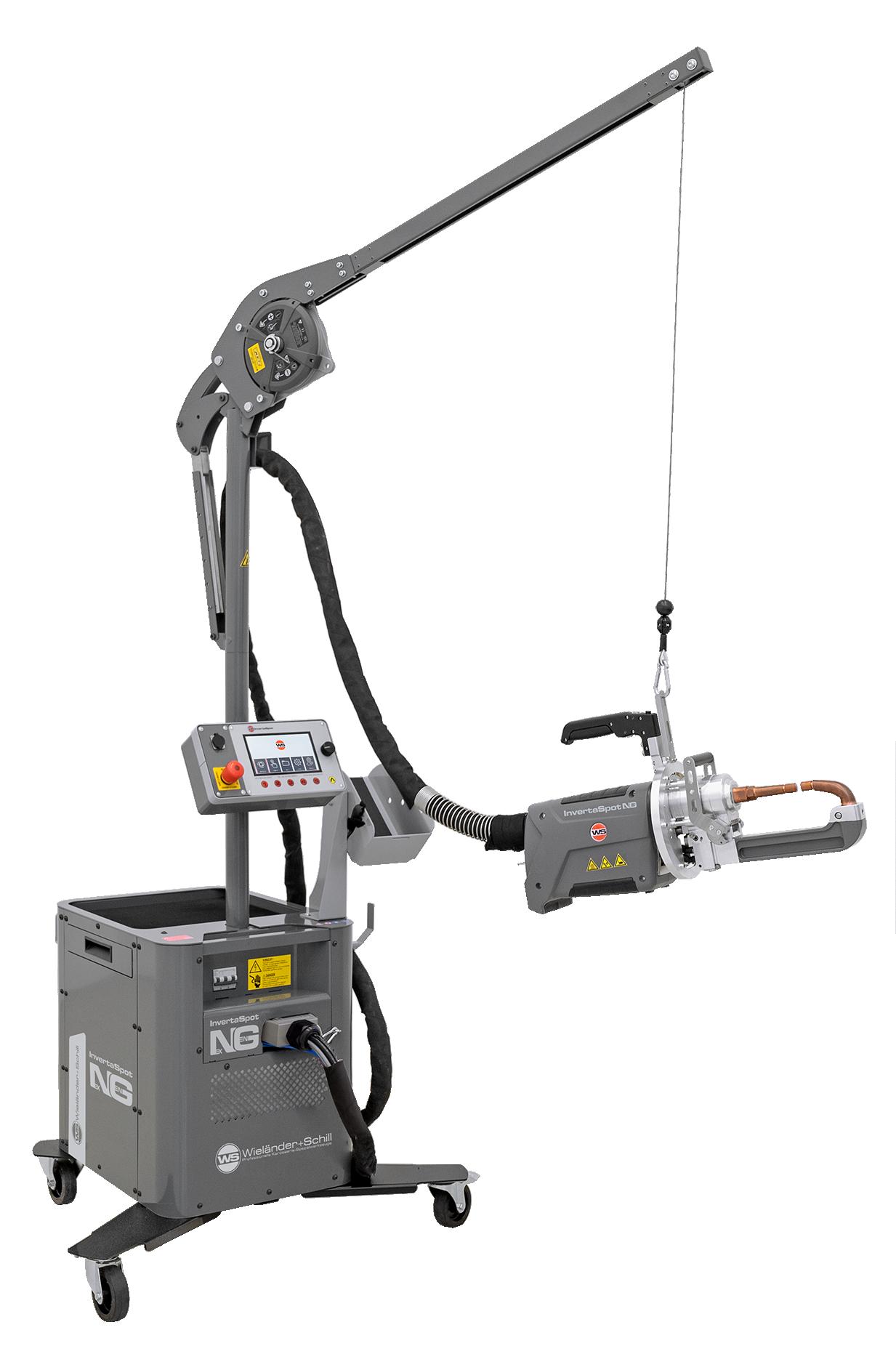






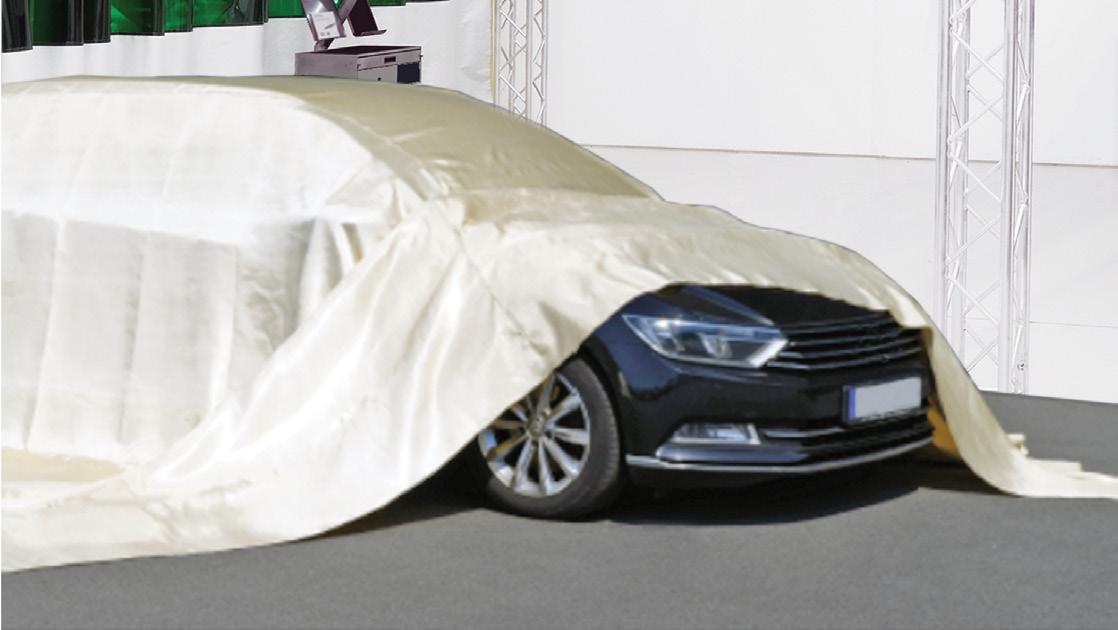
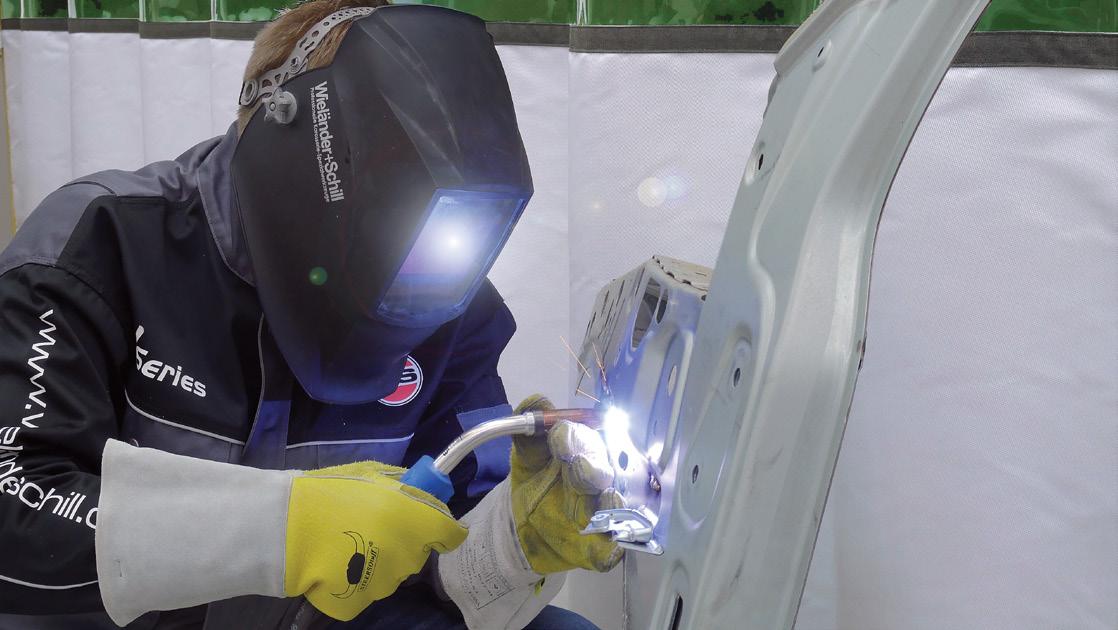
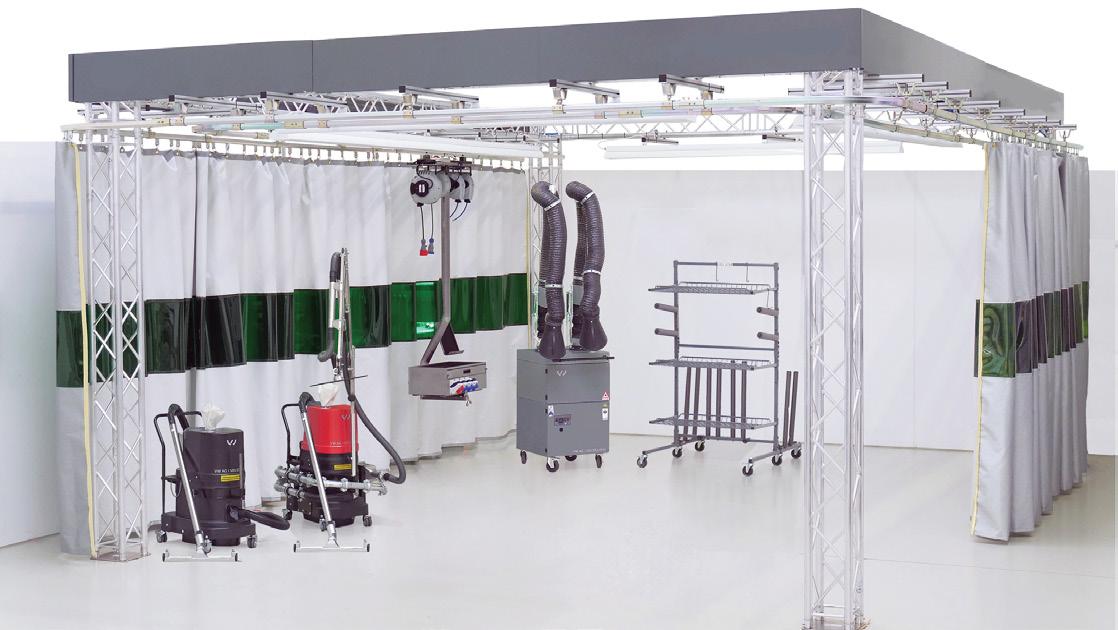
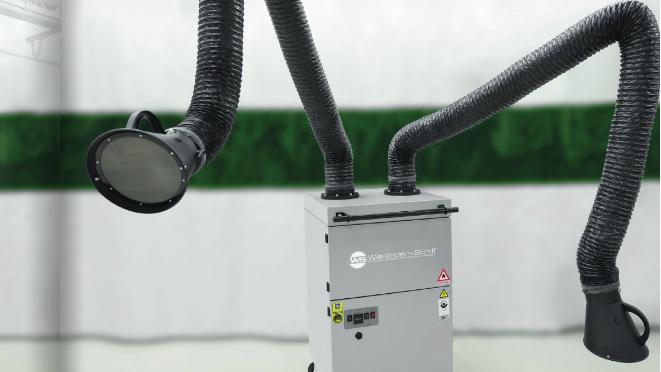
Success is defined as “the accomplishment of an aim or purpose.”
Every auto service or auto body shop business owner wants to succeed. They may all have a different picture of what success looks and therefore different paths to take, but each and every AASPMN member shop who attended the Alliance’s Leadership Conference & Annual Meeting April 28-29 at Mystic Lake Center and Casino in Prior Lake was there to map out their pathway to success.
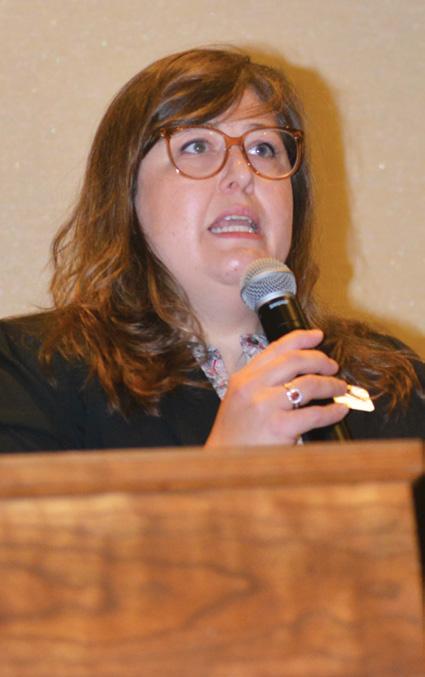
Executive Director
The 2025 event, appropriately titled “Success Defined,” gave over 175 business owners, managers and industry vendors various avenues to explore to help them discover what they need to focus on most to achieve their goals. “It’s about figuring out what success looks like for each one of you individually and what that looks like over time and in the future,” AASPMN Executive Director Linden Wicklund stated during her welcome message. There’s been so much negative talk in the industry, and it can be easy to feel down about it, she added, encouraging that “we hope you will leave here uplifted and ready to go.”
Day one laid the first brick toward finding one’s path to success via three interactive workshops. Audience members packed the room to hear Will Latuff (Latuff Brothers Auto Body; St. Paul) and Josh Shaw (Shannon’s Auto Body; Brainerd) provide valuable information on how to effectively write estimates with their “Consistently Strong Estimates: Tools for Success” workshop. There are various costs most shops are likely overlooking, especially in the area of consumables, like if only half a tube of seam sealer was used for one job and the product is unlikely to be used again. “Are they responsible for the full quantity or the partial? Those are things to take into consideration,” Latuff stated. He and Shaw also stressed the importance of following OEM procedures. Shaw used an image of a Lego build of a Star Wars Millennium Falcon to drive home the point that one will follow a manual to put this model toy together, questioning why wouldn’t one do the same thing for a vehicle. “The average new car has 30,000 pieces. Why would you not follow the manual for that? Let that sink in.”
Tyler Enslin got repair professionals to think about what holds them back from their goals with “Achievement Now – Elevate Your Success.”
“We tend to sacrifice the things we want most in life for the things we want right now,” he illustrated by using an example of someone’s weight loss goal being put further out of reach because the person wants a donut “right now.”
Having a healthy balance of confidence and humility are two factors toward achieving success. “One can’t be confident and self-loathing at the same time, but having
a healthy balance is essential to sustainable achievement in any area of life.”
It’s surely no secret that finding good workers has been a challenge for the automotive industry. Jolene Rotitch (BrookLynk) spoke about “Bridging the Gap: Engaging and Retaining the Next Generation of Workers,” outlining the characteristics of each of the five different workforce generations and how business owners can best manage multigenerational workforce challenges. There are many misconceptions about each generation. Rotitch pointed out that Gen Z often is seen as “lazy and entitled, but the truth is that they are seeking stability and mental health support.” The younger generations are also moving away from being career-minded like Baby Boomers and Gen X in favor of what they refer to as job growth. “They want the ability to upskill by receiving frequent and real-time feedback, so they can be coached through and learn their role quickly.”

Enslin got day two in gear with “Remaining Positive in Challenging Times.” Even during times of crisis, people possess the ability to manage what they focus on and create positive habits, he informed the audience with his opening keynote presentation.
“Two people can go through the exact same experience; one may only see struggles and the other opportunities,” Enslin illustrated his point that perspective is what matters most. Like the “garbage in, garbage out” phrase applies to the input sources to our brain, “you can’t fill your body with junk and expect positive results. The same goes for your brain.”
Enslin got the audience to think about what negative input sources they can eliminate from their lives. Perhaps it’s spending too much time on social media, which is filled with negativity, or being surrounded by people with negative thoughts and complaints fueling one’s focus toward their biggest stressors. Instead, he suggests actively taking the time to focus on positive things by spending a few minutes a day citing the things they are most grateful for.
Focusing one’s mindset is another key. “When we focus too much on things that we can’t control, we actually lose power over what we can control.” In fact, the only thing one really has control over is how they react to things, according to Enslin. He advised attendees to consider the situation or crisis they may face and ask if they have ownership or control over it and base a plan off that. “Problems tend to grab our focus and attention, so if we spend all of our time on that, it creates a negative problem mentality.
“There is nothing great about a crisis, or they’d call it a party or a vacation,” but even something as bad as the pandemic did leave some with positive outlooks, such as
finding more patience or gratitude for one’s health and well being.
He referred to the business world, encouraging all that some can come out thriving during hard times. “During times of crisis, there are some business organizations that don’t make it through. Some just survive to get to the other side, and then there are some who find ways to grow and come out stronger.”
The Leadership Conference always provides opportunities for members to interact and share ideas via its roundtable discussions. Attendees broke out into groups to discuss leadership/business, as well as mechanical and collision topics including shop safety, rising insurance costs, multi-location leadership, AI customer service, mechanical and collision business combined, 20 groups and leadership conferences, building projects and major expenses, supplement time delays, results from Department of Commerce complaints, repair planning and OEM procedures and safety inspection denials.
The Annual Meeting portion of the event gave the Alliance opportunity to recognize outgoing Board members, welcome new ones and remind the membership of the importance of volunteering on behalf of the automotive industry.
Wicklund thanked outgoing president Aaron Swanson (LaMettry’s Collision) for his leadership and support over the past year, especially as she recovered from major spinal surgery.
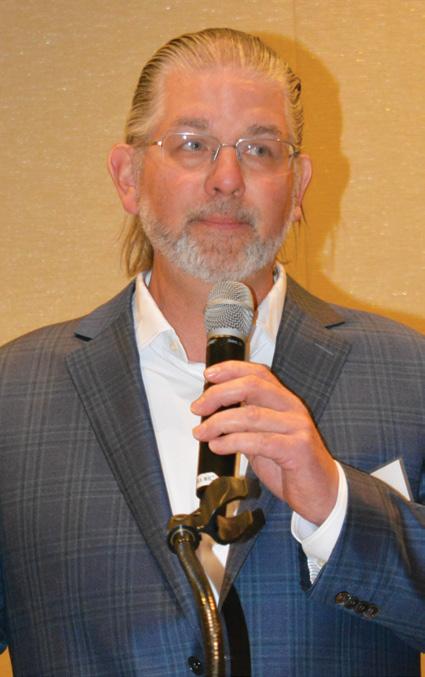
Upon reflecting over the past year’s efforts, Swanson noted great participation in the regional meet ups and activity at the state Capitol, which led to a great legislative year. “It’s about showing up and making a difference.” He acknowledged all those who volunteer their time to the Alliance, an experience that allows one to get to know others in the industry and interact outside of a formal setting. Ultimately, “showing up matters,” Swanson stressed.
Wicklund and Swanson recognized outgoing Board members Mike McLynn (Automotive Electric; Grand Rapids) and Paul Yager (Enterprise Mobility; Eagan) for their contributions to the Board and welcomed Andrea Ossowski (Blue Rock Refinishing Solutions; Roseville), who will serve as Associate Division Director, and Greg Kasel (Downtown Tire & Auto; Hastings), who will serve as a Mechanical Seat. In addition, they acknowledged Randy Notto (Lenfer Automotive & Transmission; Lino Lakes) who will serve as President for the coming year. Notto noted Swanson for his “personable and easy ways which helped make this a great year.”
Following lunch and the vendor showcase, the conference included breakout sessions on a variety of business-minded topics, giving attendees the option to pick the course of action they wanted to explore most. Those interested in expanding their online marketing efforts attended “First Impressions, Online Reviews and
Customer Marketing: Tools for Bringing Customers in and Keep them Returning,” presented by Doug Robison (Optimize Digital Marketing.)
Robison outlined the benefits of having a strong online presence – giving detailed examples of the features of the “three big players:” Facebook, Google and Yelp. The use of Yelp especially is key. Robison revealed that 47 million people used Yelp for auto repair related searches in 2023.

Perhaps the most important thing to consider is online reviews – whether they are good or bad. “We all like reviews when someone says something good,” Robison relayed; however, he delivered the key component to online reviews by asking, “How many of you actively answer your online reviews? Not many do. You are actually hurting your business if you aren’t spending time to answer your reviews.”
The average person looks at about six reviews before they make the decision to work with someone, and if a business interacts with reviews, it increases the consumer’s decision in your favor, according to Robison. “The review is there 24 hours a day for everyone to see, and you didn’t care to take the time,” he stressed, adding that “you want to remove your emotions” when dealing with negative reviews. “You don’t want to get into a screaming match; you’ll want to encourage them to call you so you can fix the issue offline.” He also recommended reviews be responded to in a timely manner, within one week of the review.
Attorney Christopher Chantry (Larkin Hoffman) informed those looking to expand their knowledge of employment law by providing an overview of the laws that may most directly affect their businesses with his “What You Need to Know: Employment Laws and the Modern Workforce” discussion.

Employers must be certain they are categorizing their employees correctly because “misclassification could have serious consequences.” Chantry educated the audience on the differences between independent contractors and employees. For example, if someone is misclassified as an employee and not an independent contractor, state agencies are likely to come looking for the unemployment insurance contributions.
He advised that although it may not be an employers’ “favorite subject,” they must comply with the Earned Sick and Safe Time (ESST) as state agencies are taking a good look into it. “It’s important because as much as this law has been talked about, it’s a common issue I
see businesses encounter with an employee handbook or an employee complaining the company violated the law.” Chantry reminded business owners that cannabis has been removed from the state’s definition of drug, and therefore, their drug policy must be compliant with the updated law. In addition, he gave an overview of the Minnesota Paid Family and Medical Leave act which goes into effect January 1, 2026.
AASPMN Lobbyist Sam Richie (Larkin Hoffman) was joined by Brian Chenvert (InsuraClaim) to review what’s being done to push for legislative support in favor of safe and proper collision repair, informing them about “Making the Law Work for Your Shop.”
Currently, AASPMN is promoting legislation that would “tighten up the statute, to give you more leg to stand on” by requiring a three-day response time from insurance companies after a shop submits a supplement, adding some definitions on repairs and repair procedures and pushing for storage fee reimbursement. The bill has gotten some serious attention, and Richie hopes to see it move forward.
He commended all those who took part in the recent AASPMN Day at the Capitol. “We’ll never be able to give more donations than the insurance industry, but we have members in every corner of the state to reach out, and it’s important for the legislators serving on these committees to be reminded of who they serve. Those of you who take the time to go to the Capitol really help move the needle. They want to interact with you and have your ear, and you theirs,” shared Richie.
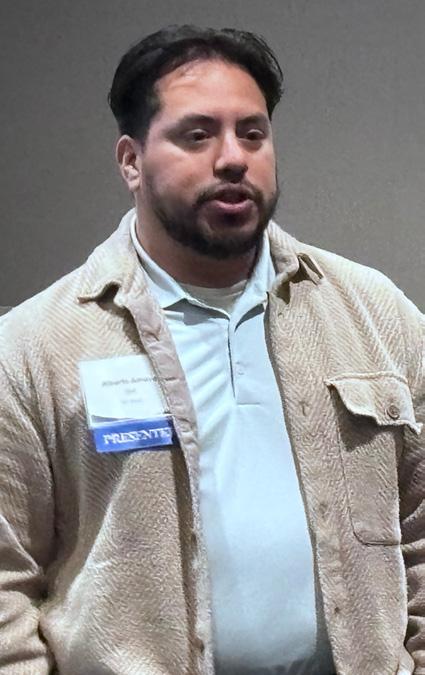
Getting paid properly is a continuous battle collision shops face daily. Alberto Amayo (3M) set out to help shops “Boost Your Profits with PreciseDocumentation and Efficient Material Management.”
Insurance companies continue to move toward digital, so that means body shops “need to make sure that you’re documenting what’s happening at your shop and make sure that you’re doing it correctly and effectively so that you get paid
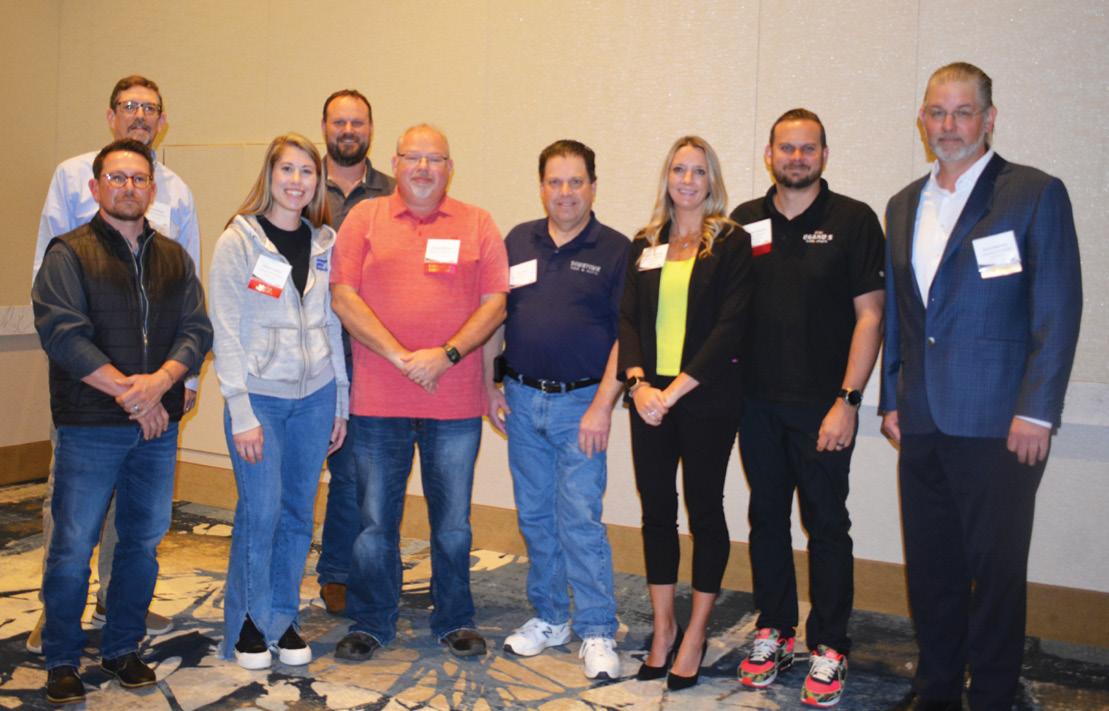
for those items.” Amayo acknowledged how extremely important it is that every vehicle be repaired properly. “Your name is on that repair. So, what better way to make sure that you capture those than by having all the correct documentation in place?”
Most insurance adjustors don’t understand the repair process – their motivation outside of paying the claim is their paycheck – so educating them is extremely important, he stressed. “Reasonable and customary are really strong words in the insurance industry; don’t be afraid to ask for things” because “the more you ask, the more likely the insurance adjustor, at some point, will actually change their tune and pay for the repairs.”
While Enslin lit the spark toward positive mindset earlier in the day, Nick Arnette, the “feel-good funny guy” carried the torch the rest of the way with his closing keynote “Me, We and Glee: How to Have a Great Attitude, Work as a Team and Keep Your Sense of Humor.”
It all starts with one’s attitude. Arnette notified the audience of the shocking fact that “73 percent of self talk is negative.” Every single person deals with change and is “going through something” because the rhythm of life is filled with ups and downs. “The COVID pandemic was bad. It’s hard to believe how bad things can get, and we are still here. That was not an easy time,” he sympathized, offering encouragement that “you’ve survived 100 percent of your worst days, and you will get through whatever you may be going through now.”
People complain once a minute during typical conversations. Why? “Because it feels good to complain. It just feels good. Misery loves company. Complaining is the junk food of conversation,” Arnette says.
People do have control over their attitudes because “happiness is a choice. We have a choice over our thoughts and emotions.” When his brother lost a job he loved, the family expected him to be down in the dumps, but instead, his brother revelled in the opportunities the job gave him, spent a day writing thank you notes to everyone he worked with and chose to be grateful for the experience instead of wallowing.
Spreading positive messages is another consideration toward happier times. “Listen to understand,” Arnette suggested. “Don’t think you know what they are saying. Silent and listen contain the same letters, so just listen.”
Taking the time to compliment people is something
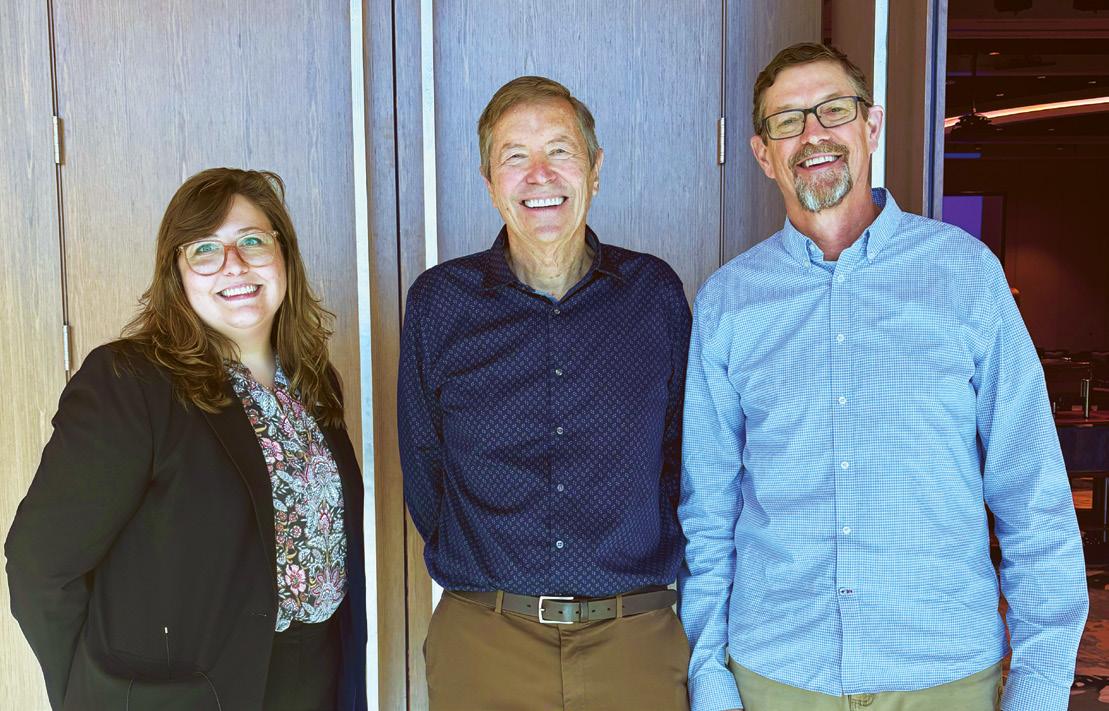
people should spend more time doing because “People may not remember what you said, but they will always remember the way you made them feel.” It’s been found that in most cases, employees don’t even know where they stand due to lack of communication from their employers. According to Arnette, 29 percent know they are doing a good job, and 36 percent rarely or never know.
Lastly, he spoke of the importance of teamwork. “Why do we need teamwork? It makes up for our weaknesses and encourages each other.”
In addition to the education and information provided throughout the day, attendees had multiple opportunities to interact with vendors, win prizes, network and enjoy refreshments with their peers. AASPMN is grateful to all of its generous sponsors who supported the event and provided prizes that were awarded to attendees throughout the day.


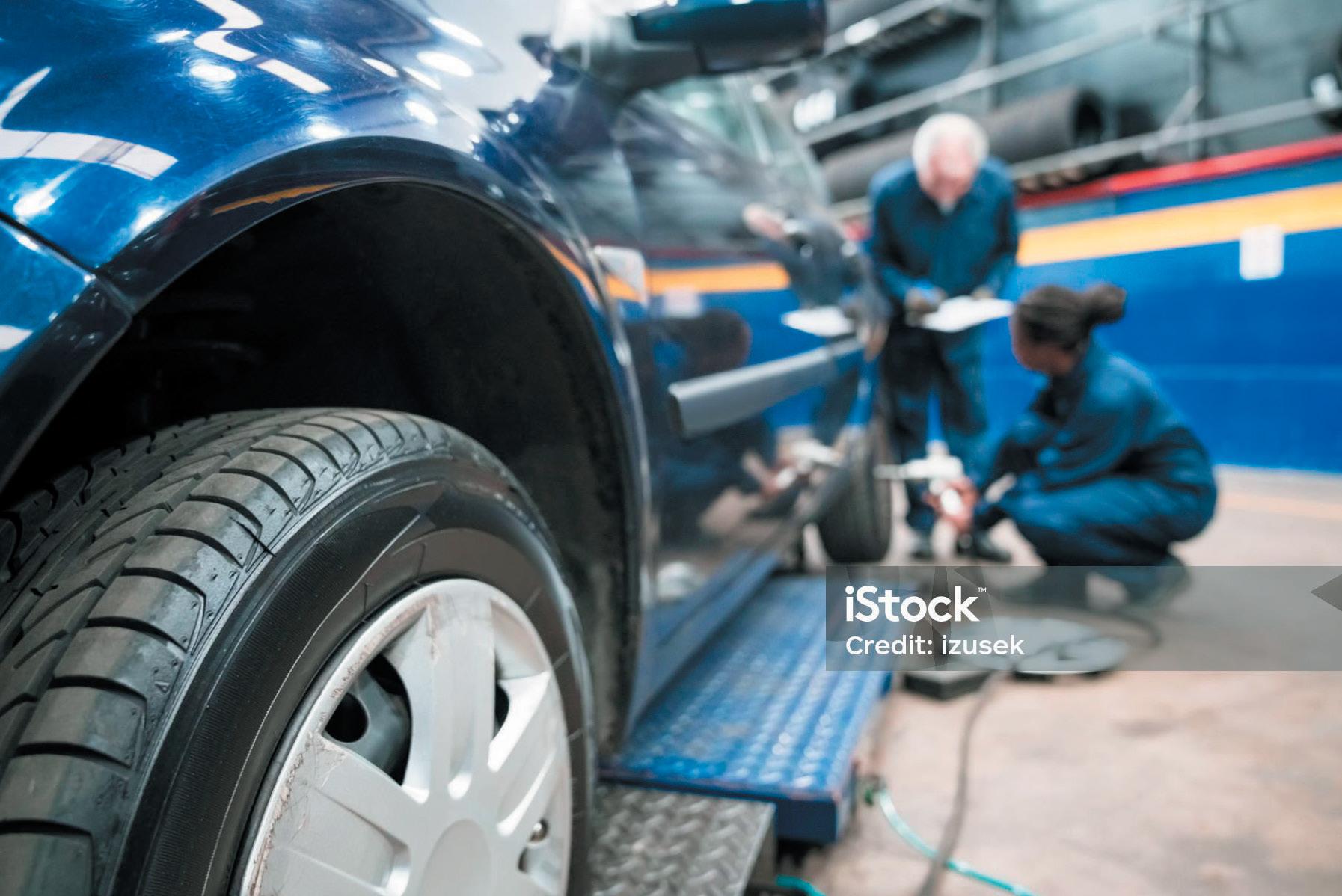

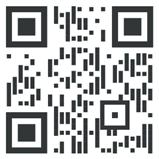


Who has heard of the dangers of electric vehicle fires? Yep – I see a lot of raised hands.
Who has thought about the dangers of gasoline vehicle fires?
Any one ever have a car start on fire?
There’s an inherent fire danger with vehicles. Most have plastic containers full of gasoline, a liquid more flammable than paint thinner. The body might be steel, but the car has plenty of plastic. And while the plastic may not ignite easily, it certainly can burn. Many vehicles have aluminum or magnesium components. Aluminum and magnesium burn.
So why are we now so concerned about fires with electric vehicles? We’ve had years to figure out how to put out car fires. The standard fire extinguisher in your shop, an A/B/C or a B/C extinguisher, does an effective job with gasoline. Lithiumion batteries, used for EVs, for many battery-powered tools and for the cell phone in your pocket, are a new and different kind of fire hazard. And while they are usually less likely to ignite than the container of gasoline, they can be much harder to put out.
Lithium-ion batteries (Li-ion) have become widely used because they pack a lot of power in a small space. But some characteristics make them a special hazard in a fire.
Hybrid vehicles might have Li-ion batteries or nickel-metal hydride (NiMH) batteries. Because the latter aren’t nearly as powerful as Li-ion, they are no longer used in all electric vehicles.
Batteries work by creating electrical current when ions move through an electrolyte, from an anode to a cathode. In a leadacid battery, the electrolyte is a sulfuric acid/water solution. A NiMH battery uses an alkaline material such as potassium hydroxide for its electrolyte. Those won’t ignite. In a lithium-ion battery, the electrolyte is a flammable solvent.
What’s required for a fire? Fuel, a source of electrons, heat and a chemical reaction. The Li-ion battery
by Janet Keyes, CIH
supplies the fuel and the source of electrons. Heat could be from a spark, from overcharging, from a short circuit caused by damage, or from a fire external to the battery. If one battery cell generates more heat than it can dissipate, it can cause adjacent cells to fail and overheat. The overheated cell can lead to the barrier separating the anode and cathode to melt or distort, causing an internal short circuit. The cathode begins breaking down, releasing more heat and oxygen. And then cell temperatures keep rising – and you have thermal runaway. Eventually, all of the cells in the battery can heat up and ignite.
Lithium-ion battery fires are difficult to detect, difficult to control and difficult to extinguish. You can’t use fire suppressants to remove oxygen, because the runaway reaction is generating its own oxygen. Cooling with water or foam works if it can get to the fire. But in newer vehicles, the batteries are in waterproof and fire-resistant protective cases, so firefighters can’t get extinguishing agents on the fire itself. Often, allowing the fire to burn itself out is the best option. Fire departments may be able to cover the vehicle with a special fire blanket, to protect the surrounding area and to contain the toxic and flammable gases given off in the fire.. Until the battery is completely discharged or destroyed, there’s still a chance of cells reigniting.
If you have a damaged EV:
• Assume the high-voltage battery is energized and could shock you
• Treat the vehicle as a fire hazard. Store it outside when you can, 50 feet away from any structure or other vehicle.
• If you see any sparks, flame or smoke, if there’s any leaking fluid from the battery compartment, if it seems hot, or if you hear noises (gurgling, popping, bubbling, hissing) from the high voltage battery, call 911 right away.
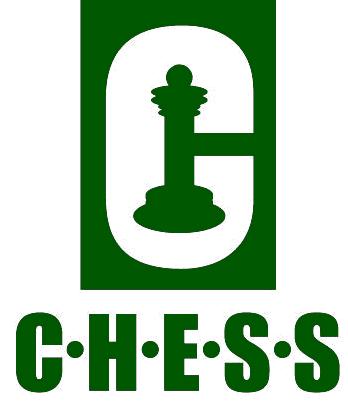
• If the vehicle’s on a lift, lower it before you evacuate. That makes it easier for the firefighters to deal with it.
• Don’t bother trying to use an extinguisher on a Li-ion car battery fire. You won’t succeed.
Keep in mind that Li-ion batteries in tools and phones can also undergo thermal runaway. The danger isn’t as great because of their small size. But make sure your technicians handle those with care. Don’t abuse or try to modify the batteries. Use only batteries and chargers okayed by the manufacturer. And if a battery is leaking, heating up or making noise, get it outside, away from anything that can ignite. If one of these small batteries does ignite, call 911. If it’s safe for you to do so, you can try using an ABC or BC extinguisher on the small battery.
For more information, contact Carol Keyes at carkey@chess-safety. com or (651) 481-9787.
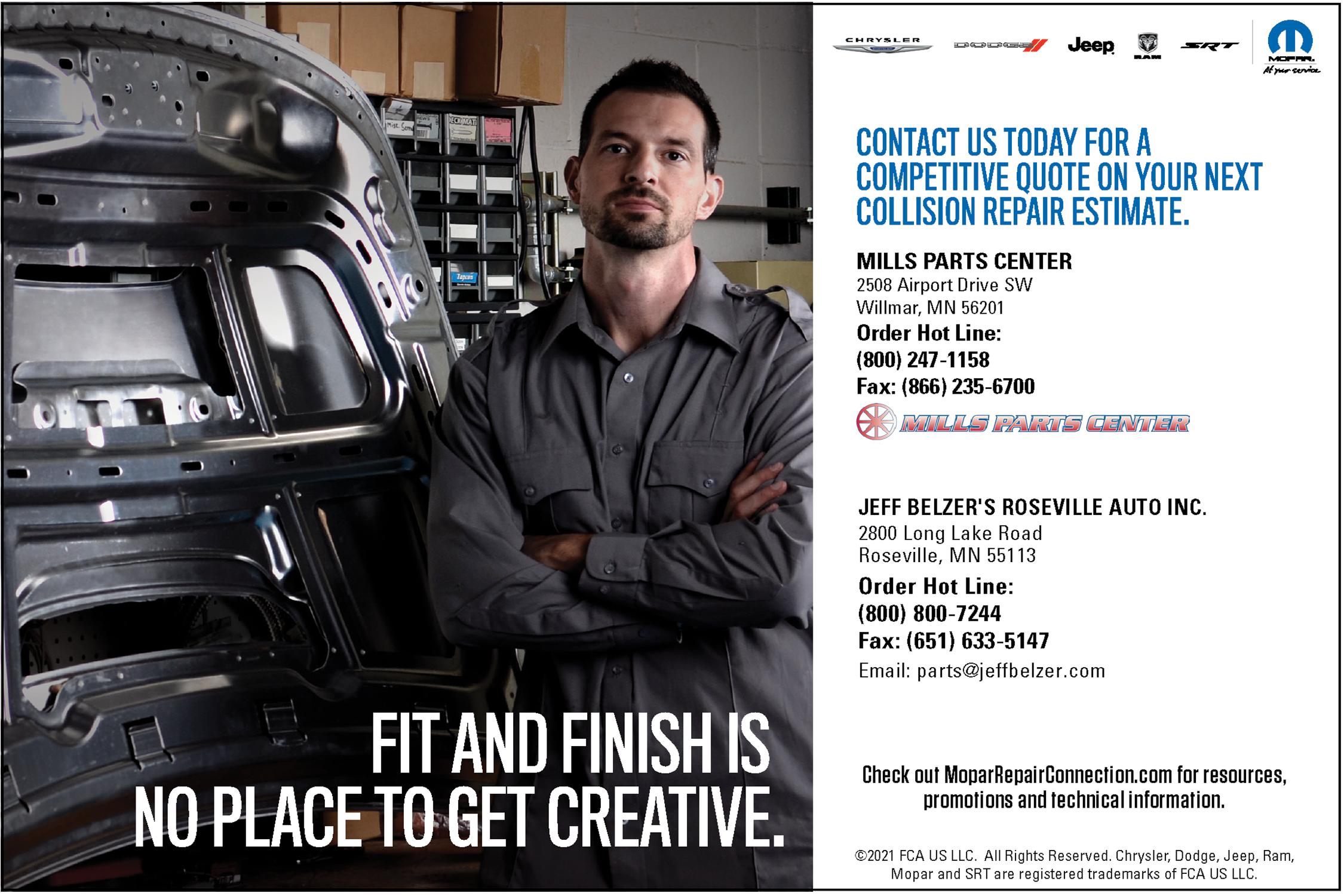
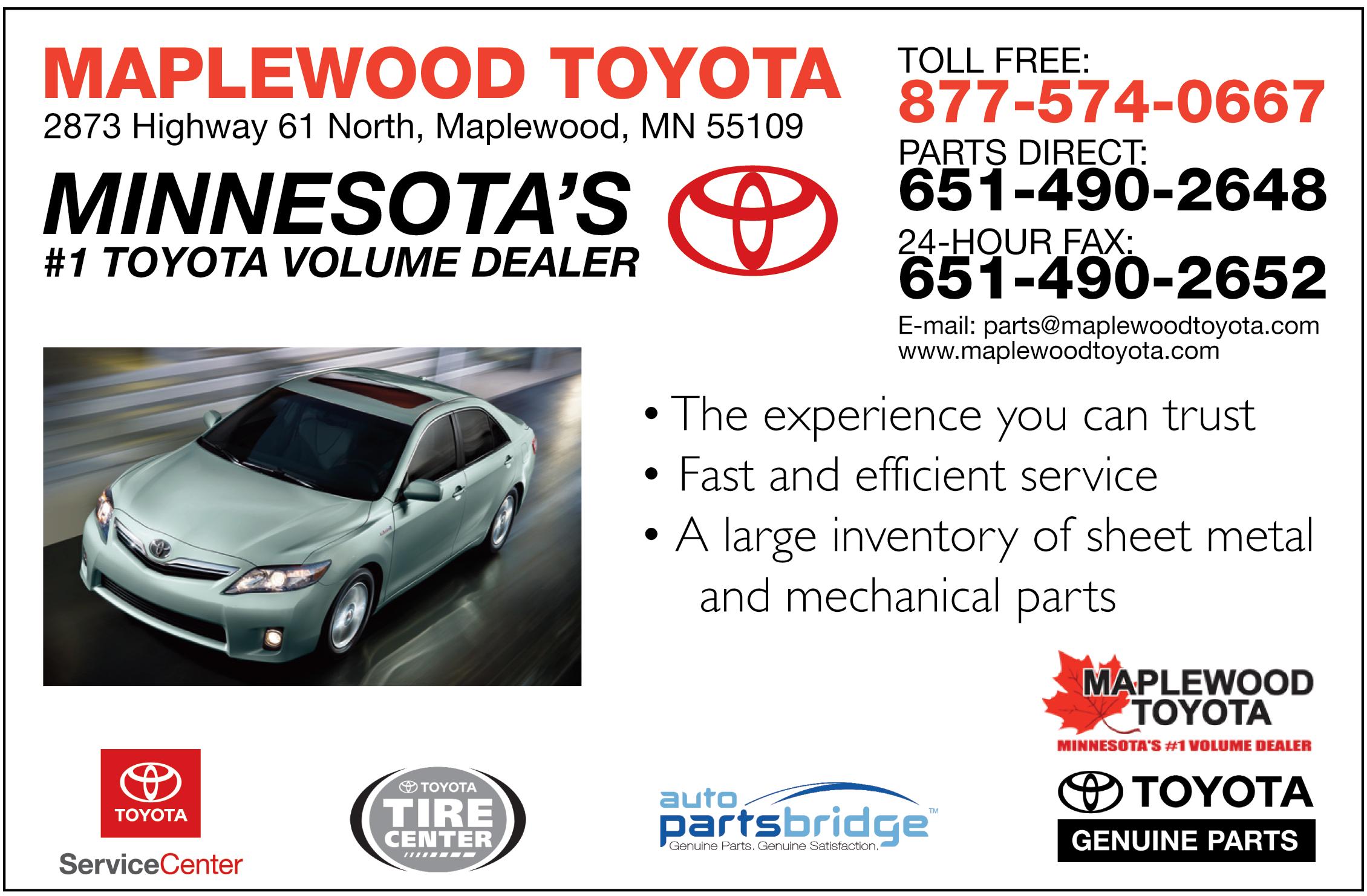
HELPING TO IMPROVE COLLISION REPAIR ESTIMATE INFO THROUGH REPAIRER FEEDBACK
If you’re performing automotive repairs of ANY kind, you need to utilize the DEG! Check out some recent Database Inquiries - and their resolutions - below!
Solera Qapter (Audatex) – DBRM 2025 Update
Solera Qapter users can find the latest version of Qapter Estimating Database Reference Manual (DBRM) by selecting the “reference manual” icon in the top menu bar. DEG has updated its Industry Estimating Systems link with the latest version for 2025.
Mitchell – Mitchell Cloud Estimating & Mitchell 1 ProDemand
Mitchell 1 ProDemand is made by Mitchell 1, a division of Snap-on Incorporated. Any labor information referenced from Mitchell 1 is not from Enlyte, parent company of Mitchell Cloud Estimating. CEG Information is not applicable to Mitchell 1 product information.
CCC ONE Web users will find “H-NOTES” can be accessed at the bottom of the part selection screen next to the labor footnotes. Existing CCC Desktop users can still access the “H-NOTES” in its original location.
Solera Qapter (Audatex) – Three-Stage Spray Out & Let Down Panels
According to the Solera Qapter DBRM Section 4-4 Refinish Guidelines, three-stage refinish allows for two spray out/let down panels; included as part of the “setup” time. The three-stage refinish formula includes everything in twostage setup plus what’s listed under three-stage.
If multiple attempts are needed to perform spray out/ let down panels, duplicate effort is NOT INCLUDED.
DEG Inquiry 38709 provides feedback from Mitchell regarding glass masking operations – sometimes referred to as “roping” when using lift tape to pull back seals when refinishing panels with components attached. Mitchell responded that the information can be found in the refinish general information:
“Labor times related to repaired and/or used panel example: Remove and install or masking of glass, outside handles or exterior trim, feather prime & block, masking for primer surfacer application are not included in refinish time. The steps required for refinishing a repaired and/or used panel may vary from those required for a new panel depending on the condition of the repaired and/or used panel.”
Any materials used for masking operation is NOT INCLUDED per Mitchell CEG Labor General Information.
“The labor times shown in the Guide do not take into account the cost of any materials, or the cost of hazardous materials recycling or disposal.”
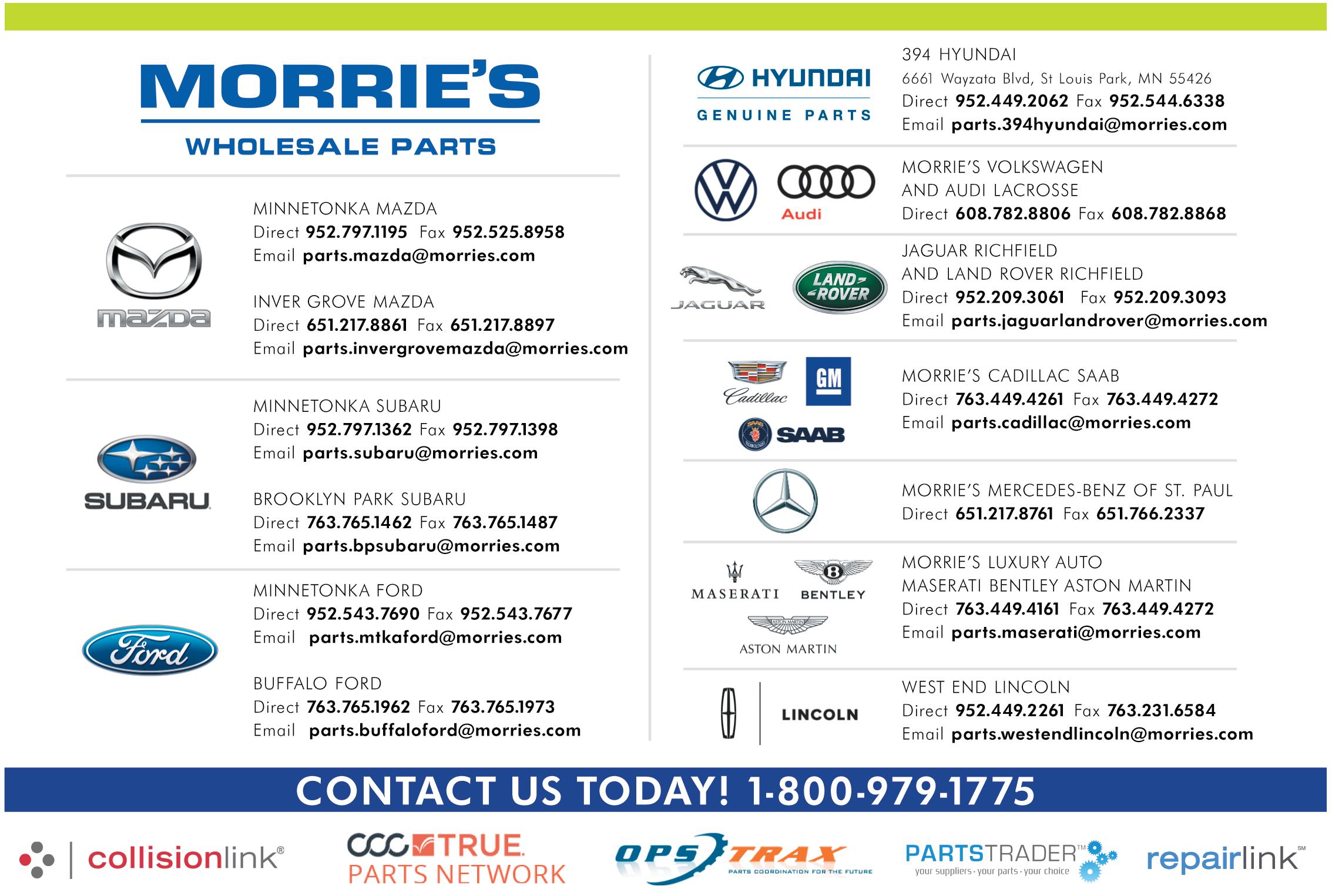








Join Reliable Automotive Equipment’s Dave Gruskos for a conversation with leading OEM representatives of certified collision repair programs, sharing the latest news & updates from the OEM. This month, we meet Volvo’s Kenneth Park.
Dave Gruskos: What mandatory tools, equipment or facility parameters must a shop adhere to in order to be part of the program?
Kenneth Park: The tooling and equipment requirements for centers to participate in the program is quite long. High level centers are required to have the approved spray booths, welders and frame machines, as well as various other hand tools.
DG: Are there any new program requirements of initiatives you would like to share with our readers?
KP: We recently upgraded our welder requirements from 12,000 amps to 13,500 amps to ensure proper marrying on heavily structural repairs in certain areas of our vehicles.
DG: How does Volvo support shops as they navigate the investment in tools, equipment or facility upgrades to maintain certification and repair to OEM standards? Does Volvo have preferred vendors for purchasing required equipment and tools, and do these vendors offer support to the shops?
KP: We essentially do not require specific tools from specific vendors. We do have a list of approved/required tools such as benches, welders, spray booths, refrigerant machines, etc., that do comply with our requirements. However, most required tooling can be purchased from a vendor of the center’s choice. We find that vendors supplying these tools to locations offer support when necessary and we’re always happy to assist any of our Volvo Certified Centers when they’re looking to make a purchase.
DG: What role do certified shops play in communicating Volvo’s standards of quality and adherence to OEM repairs to consumers? What is Volvo doing to help these shops stand out to consumers in an increasingly competitive market?
KP: We believe that clear communication and continuous education are essential to promoting the core values of the Volvo Certified Collision Program. This program is built on the principle of prioritizing occupant & pedestrian safety, both before and after a collision. We emphasize this commitment across our network, empowering our certified locations to share that same message with Volvo drivers. Additionally, we engage with customers through multiple channels to raise awareness about the importance of high-quality collision repairs and the potential risks associated with improper procedures. Repair requirements can vary not only between vehicle makes but also between individual models. Factors such as structural design, advanced technology, and the materials used in manufacturing may necessitate specific techniques, tools, and training for proper repairs.
# of Volvo Certified Collision Center locations: 285 (Continental US & Hawaii)
Ratio of independent to retailer-owned locations: 71% independent, 29% retailer-owned
DG: How does Volvo help shops adapt to the constantly increasing complexity of vehicle technologies, like ADAS or EV repair?
KP: We require our repair centers to maintain up-to-date training through I-CAR and to actively use our proprietary software, VIDA. This is the same diagnostic and repair platform utilized by our retailers, ensuring consistency and accuracy across all service points. By using VIDA, our centers gain deeper familiarity with our vehicles, repair procedures, and all associated parts, enabling precise and efficient repairs.
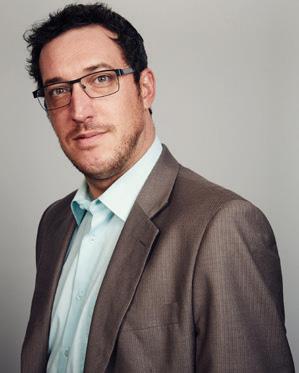
DG: What unique challenges and/or opportunities do you see for certified shops who specialize in repair of Volvo EVs?
KP: The electric vehicle (EV) market has seen steady growth, and in many regions, it's now common to see EVs on the road alongside traditional internal combustion engine (ICE) vehicles. This shift presents a significant opportunity for collision centers to expand both their service capabilities and technical expertise.
However, EVs differ significantly from ICE vehicles and often require additional training, specialized tools, and a higher level of investment to ensure repairs are performed safely and correctly. These added requirements may discourage some centers from pursuing EV repairs, particularly in areas where EV adoption or charging infrastructure is still limited.
That said, in markets with a high EV car parc, the opportunity is substantial. EV owners typically seek out repair facilities that are both experienced and certified by the manufacturer. By specializing in EV repairs and obtaining the proper certifications, a center can position itself as the go-to destination for EV repairs, potentially receiving referrals from other shops that focus solely on ICE vehicles.
In Q3 of 2024, we launched the EV Tier of our certification program. This new tier includes five days of hands-on training with our vehicles, prerequisite coursework, and a suite of EV-specific tools, in addition to those already required by our Certified Collision Program.
This initiative not only ensures the highest standards of safety and quality in EV repairs but also gives customers the confidence that their vehicles are being serviced by trained and certified professionals. Only collision centers that are already Certified are eligible to pursue EV Certification.
CARS Cooperative
Contact: Stephenie Sheppard
405-547-4077 / membersupport@cars.coop
Members receive discounts on a variety of products and services they use every day! From discounts on paint and rental cars to office supplies and phone services. Over 50 programs available!
Colonial Life
Contact: Deb Ferrao
612-600-4135 / deb.ferrao@coloniallifesales.com or Tracy Bailey 612-801-0139 / tracy.coloniallife@gmail.com
Dedicated representatives can help members transform their benefit package with competitive rates, value added services at no cost and complimentary legal document preparation service. Colonial Life has the tools and flexibility to create a plan to fit everyone’s needs.
Vestis
Contact: Ryan Vick 612-269-2303 /ryan.vick@vestis.com
Discounted pricing to members on rental of uniforms, entrance mats, shop rags, etc. Purchases are also discounted. Members receive annual rebate equal to 10% of their business with Vestis each year.
Larkin Hoffman
Contact: Sam Richie srichie@larkinhoffman.com
Members receive free, over-the-phone legal assessment and consultation (some restrictions apply) with an attorney who specializes in the area of law that is the subject of the call.
Optimize Digital Marketing
Contact: Max Gamm
651-217-8152 / mgamm@whyoptimize.com
All-in-one Digital Marketing Solutions: Expert social media, digital advertising, website and software solutions that keep you present online so you can be present offline!
Association BankCard Services
Contact: Carley Chivers
715-254-9600 / carleyc@midwesthardware.com
Competitive rates for AASPMN members. Terminals and printers sold at cost.
Mitchell 1
Contact: Mitchell 1 Representative 888-724-6742 ext. 6669
Mitchell 1 offers AASP members a $10 per month discount on any eligible Mitchell 1 subscription.
Mitchell International
Contact: Mitchell International Representative
800-238-9111
AASP members receive $350 off Mitchell's MD-500 all-in-one solution for scanning, calibration, estimating, and blueprinting.
IDENTIFIX
800-745-9649
Members enjoy a 20% annual savings on Direct-Hit and Direct-Help subscriptions, the industry's most reliable source for experience-based repair information.
Certegy Check Services
877-520-2987
Discount rate of .75% to AASPMN members. Use existing credit card terminal. Fast claim payments.
Complete, Health, Environmental & Safety Services (C.H.E.S.S.)
Contact: Carol Keyes 651-481-9787 / carkey@chess-safety.com
AASPMN members receive a 20% discount on Safety Data Sheet Management (SDSLinks), Right to Know(RTK)/ Hazard Communication program customized for your facility and monthly safety reminders, and other safety, OSHA or environmental assistance.
Assessment Associates International
Contact: Nate Page 952-854-6551 / nate@aai-assessment.com
Designed to help facilitate and enhance hiring decisions. AASPMN members receive 50% off retail price, starting as low as $15 per assessment.
Automotive Seminars
Contact: Tim Houghtaling 920-866-9813 / tim@automotiveseminars.com
Discounted pricing to AASPMN members on all live-online events, as well as on-demand training videos. Automotive Seminars specializes in diagnostic training that provides automotive technicians with knowledge, testing techniques and data interpretation skills needed to diagnose today’s vehicles. The live-online events and on-demand training videos focus on automotive electronics and engine management systems and are written and created by some of the industry’s leading diagnostic technicians.
180BIZ
540-833-2014 / info@180biz.com
Members receive a 25% discount on Rick White's Pocket Business Genius subscription, offering independent auto shop owners fast access to actionable business advice from a leading industry expert.

